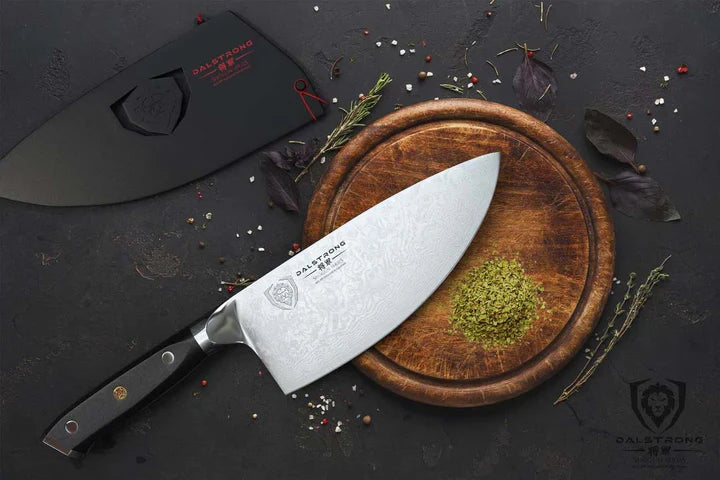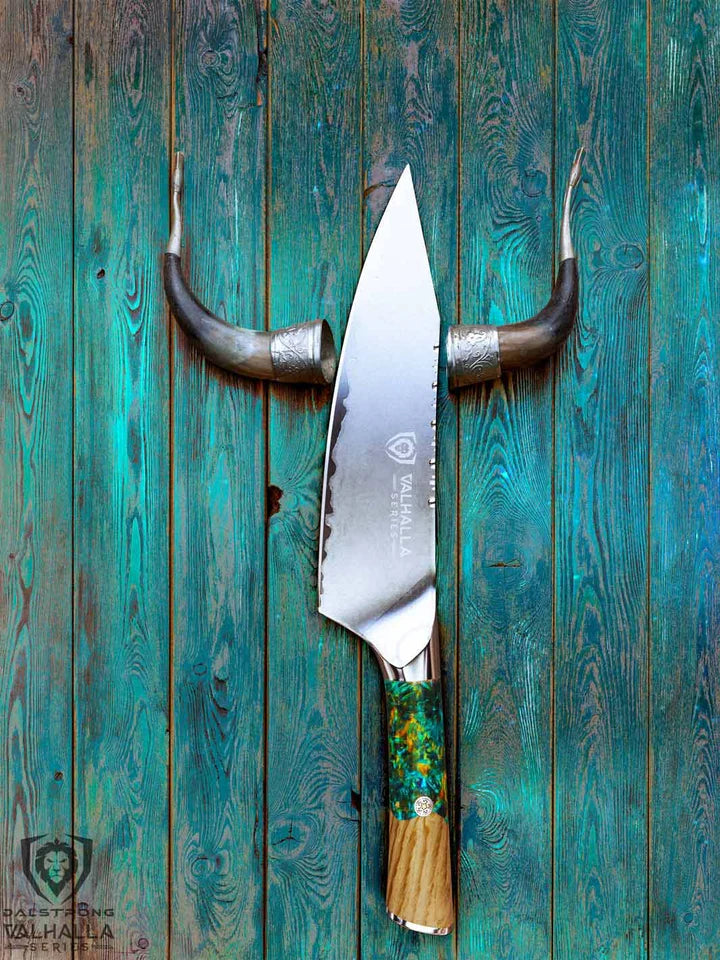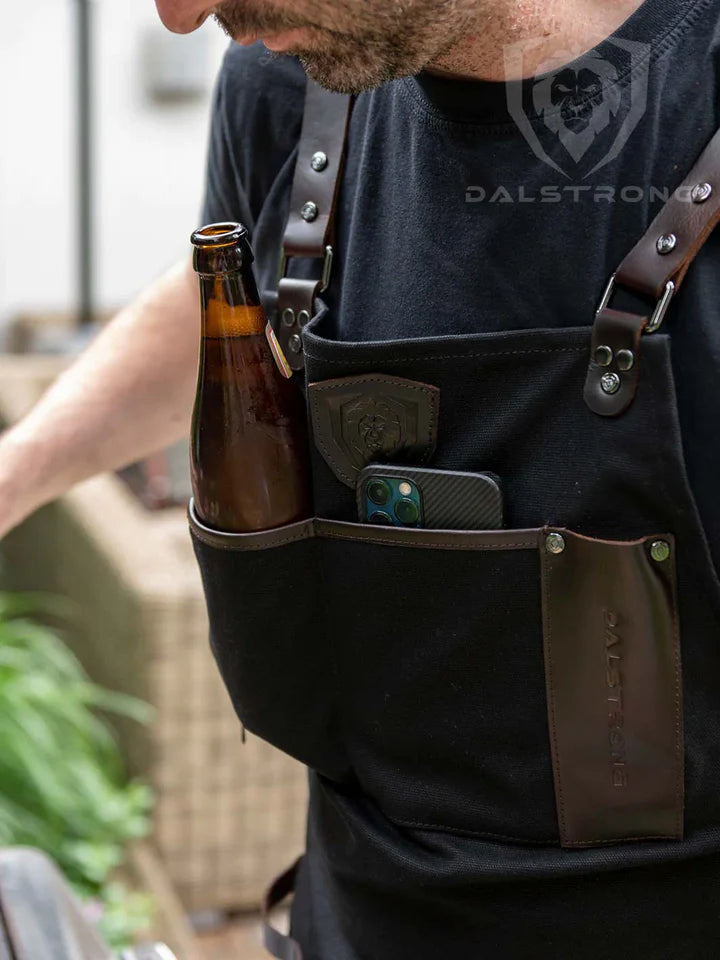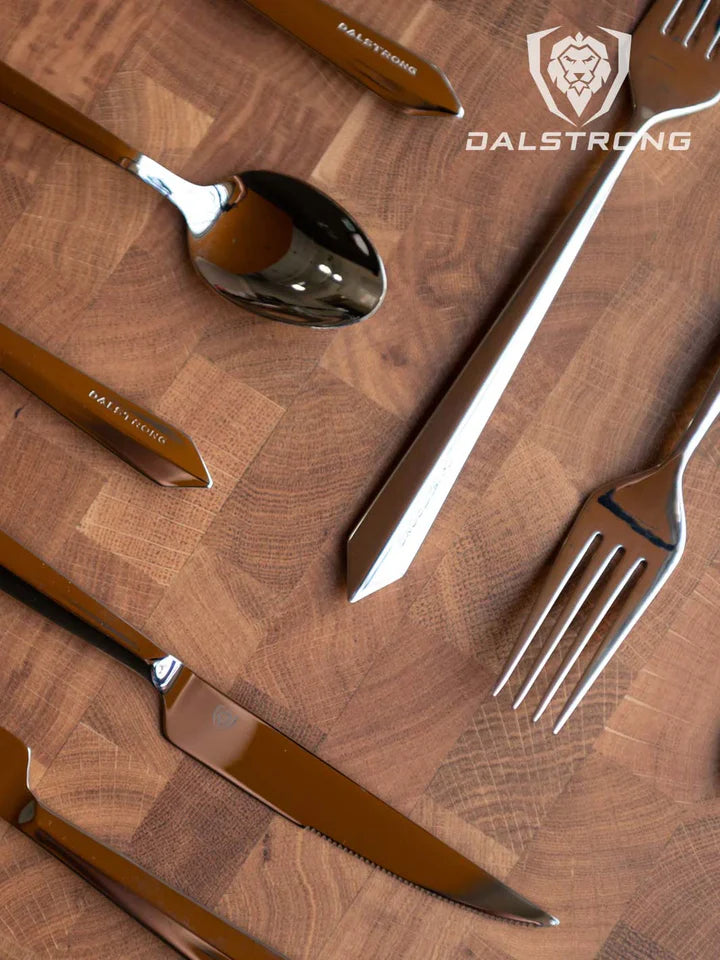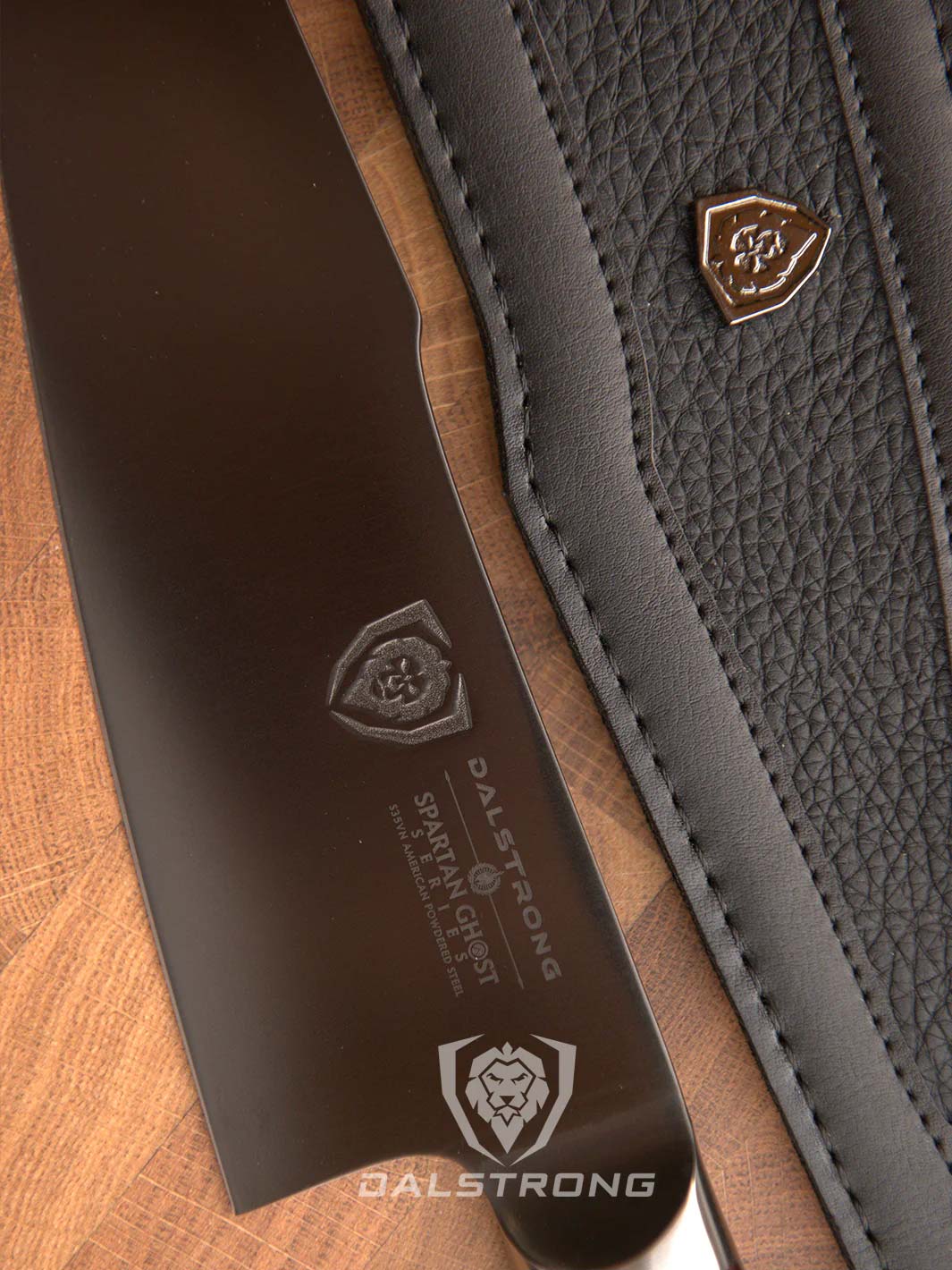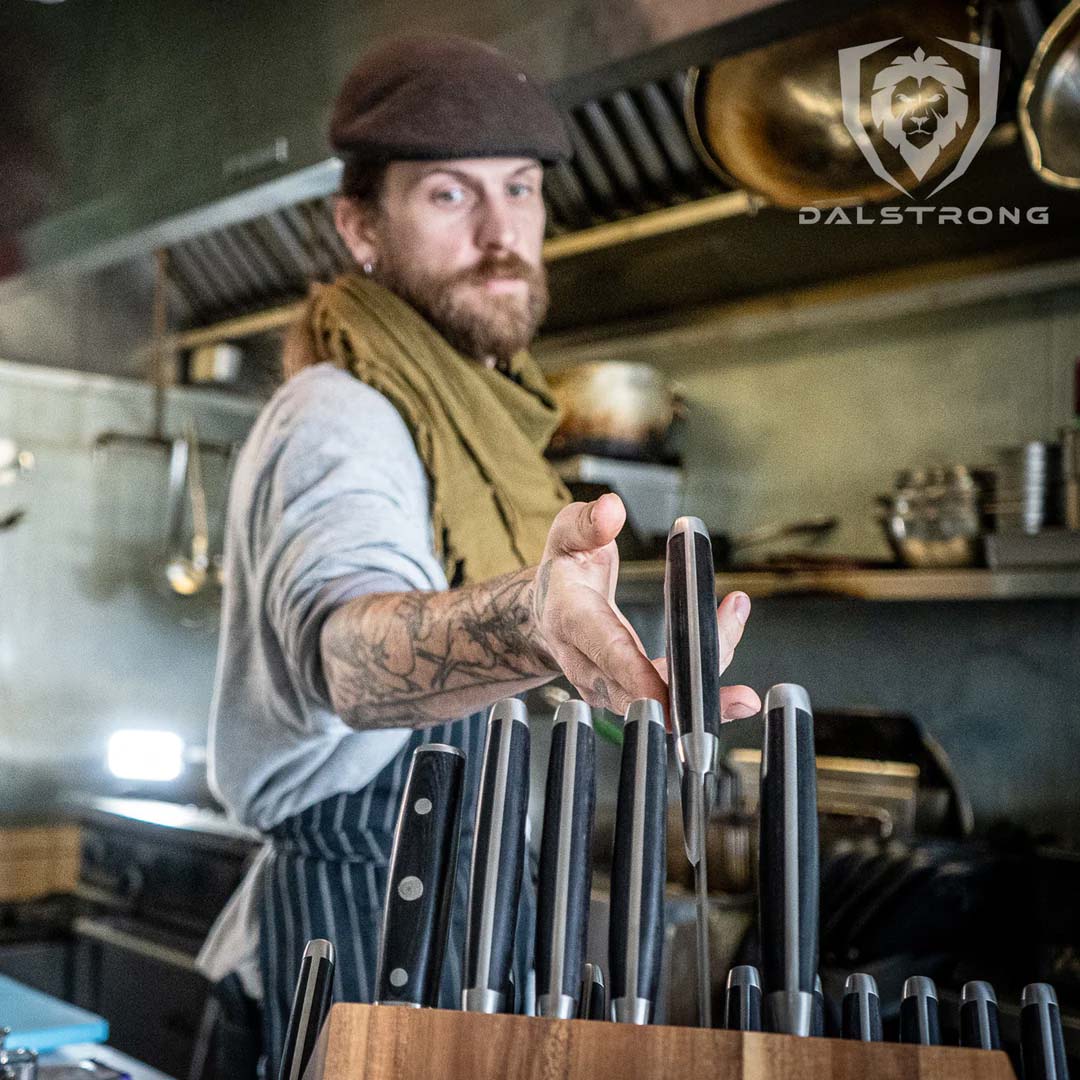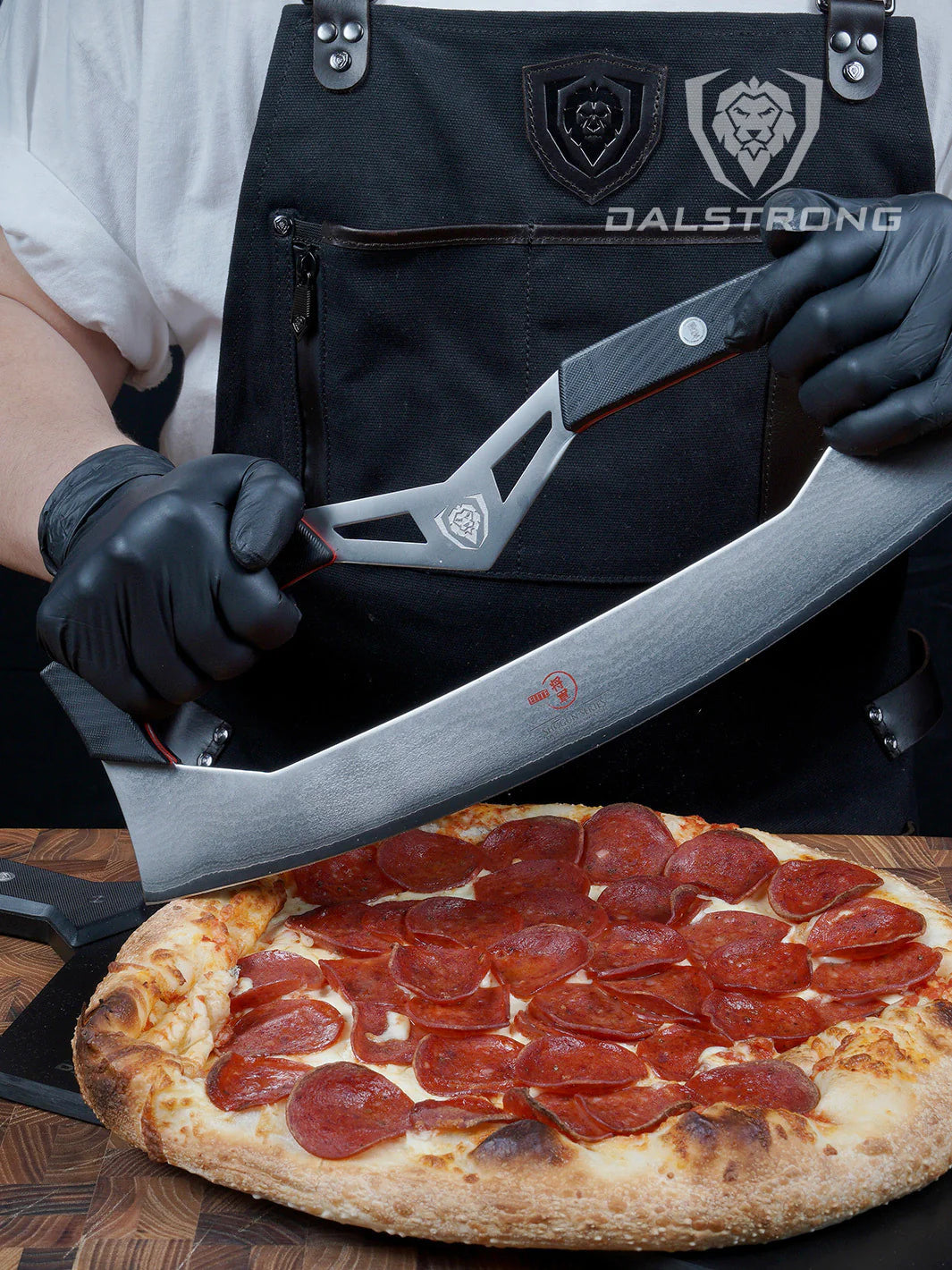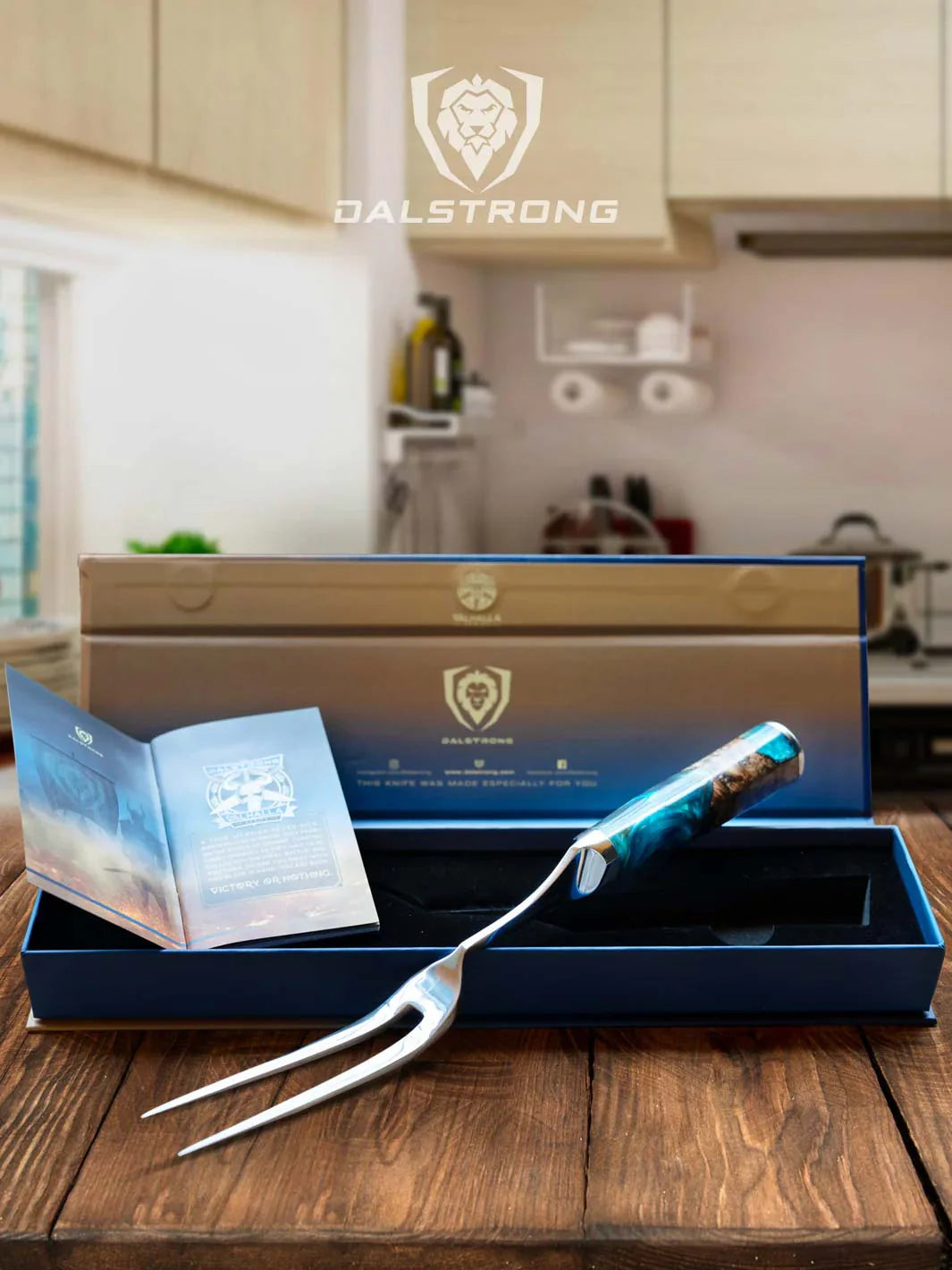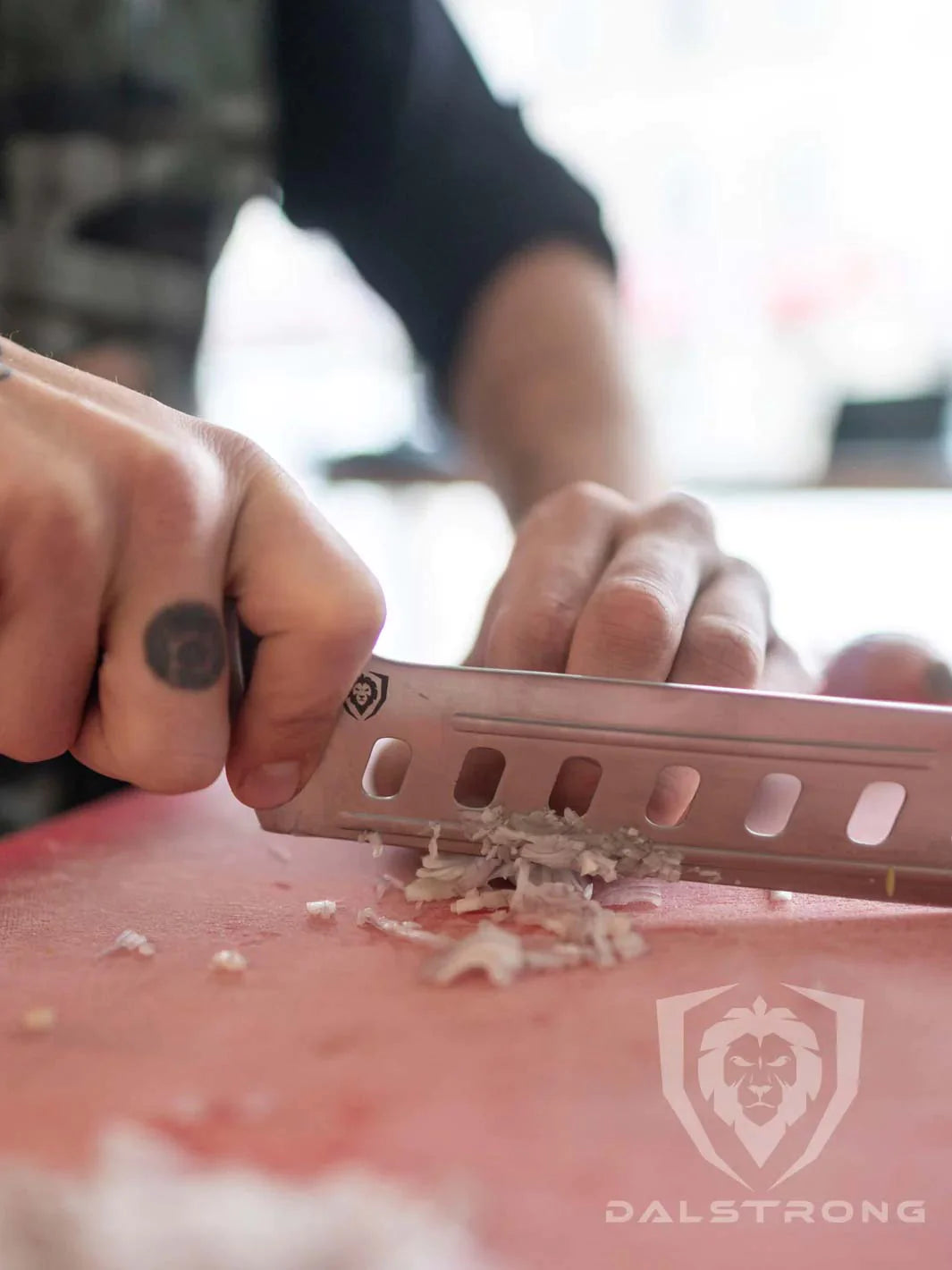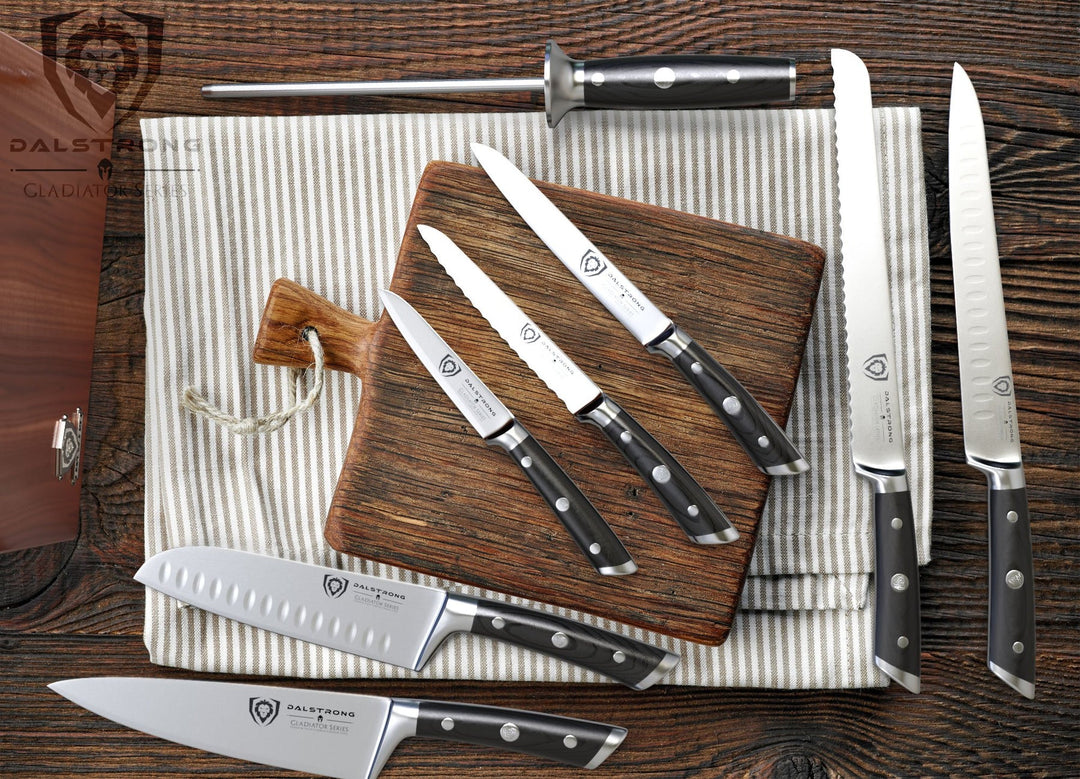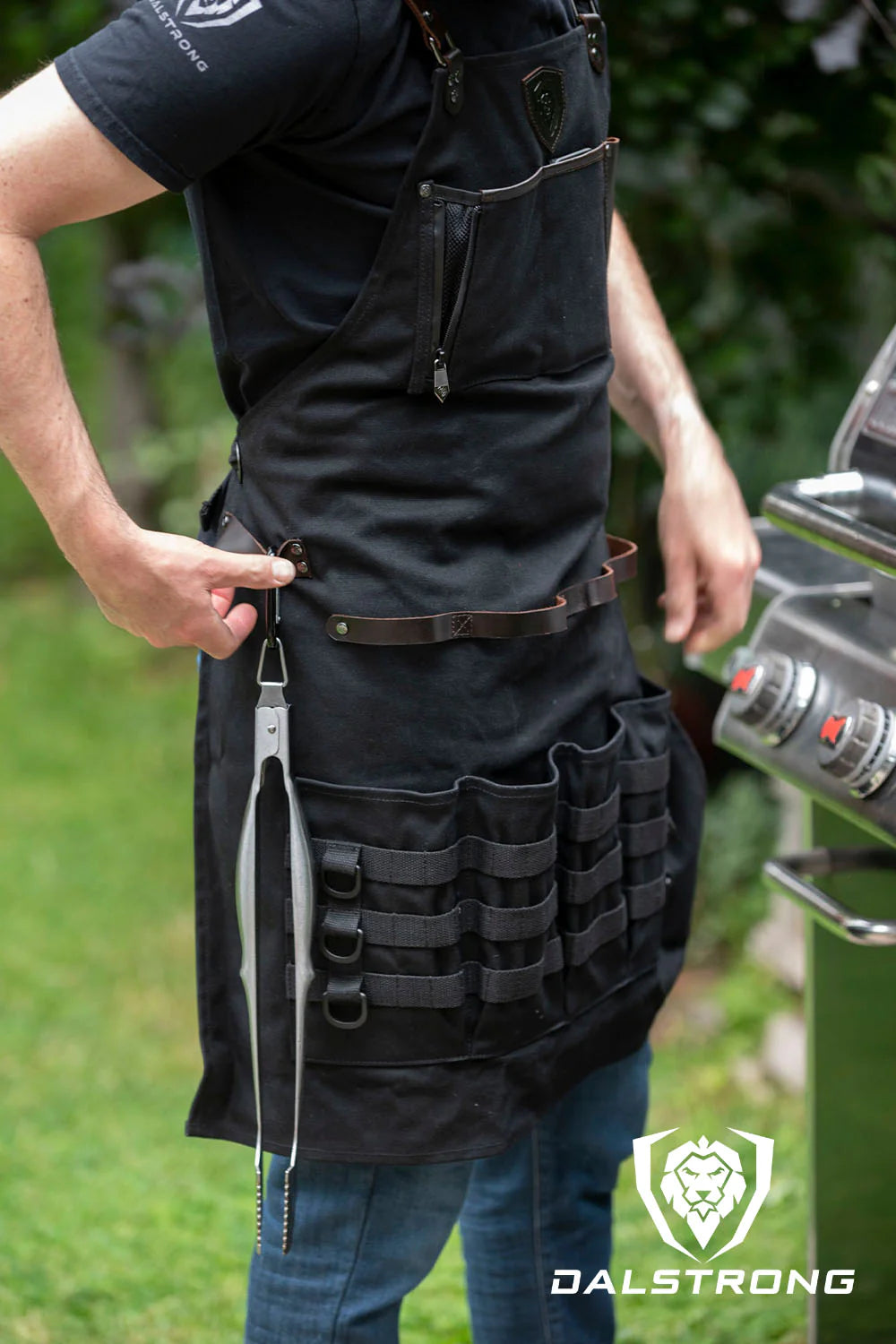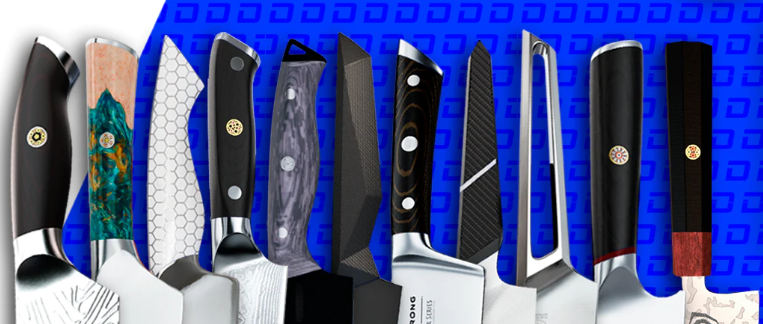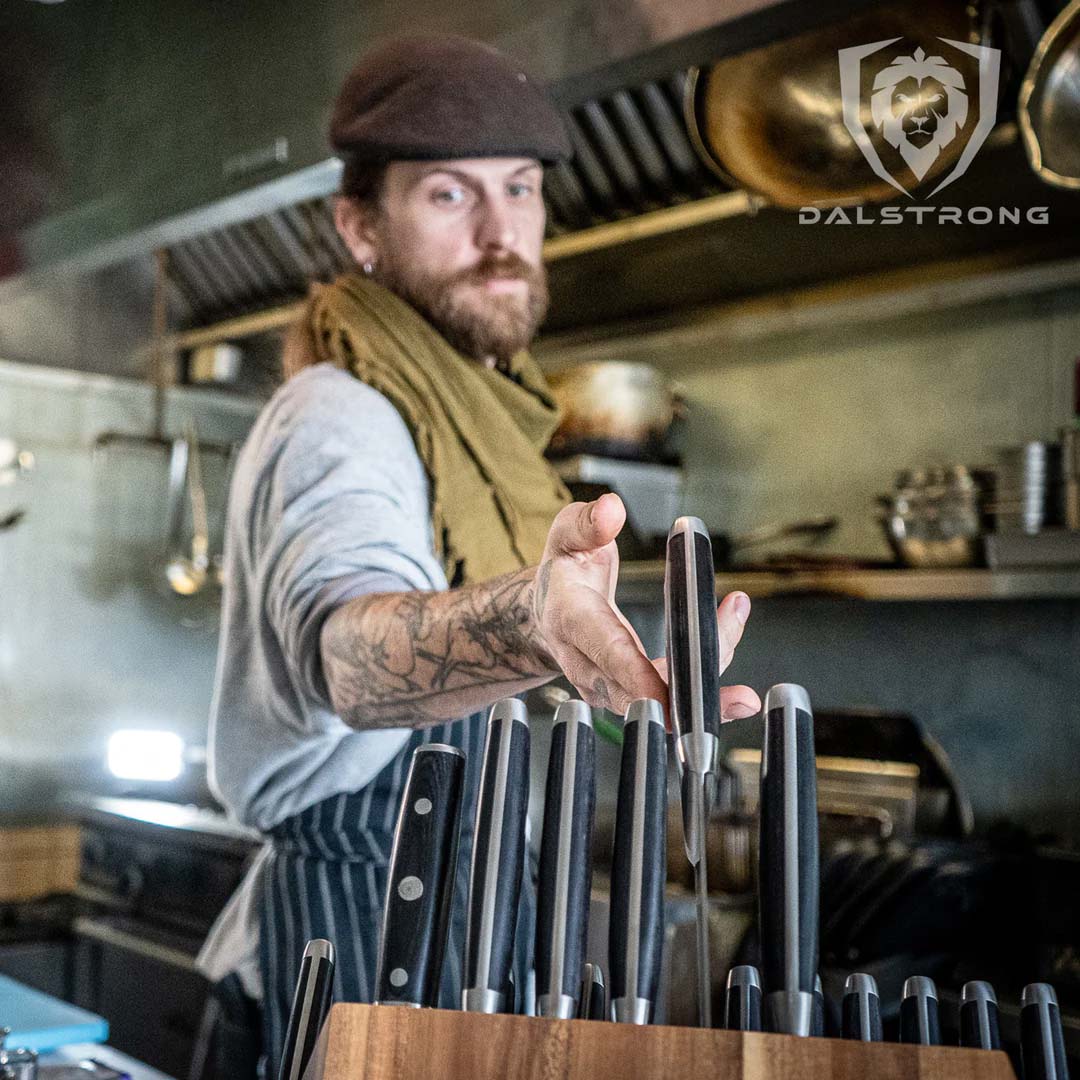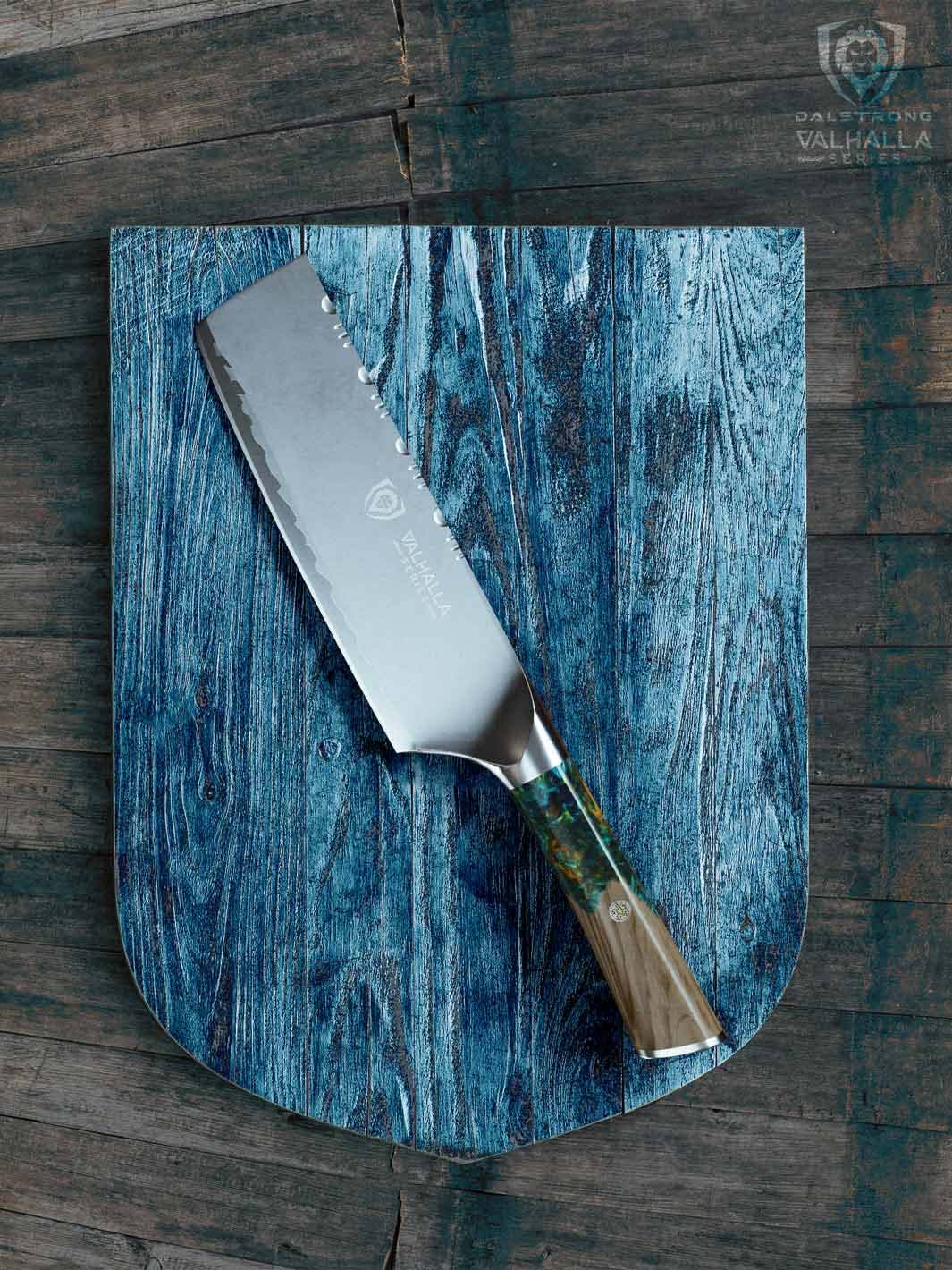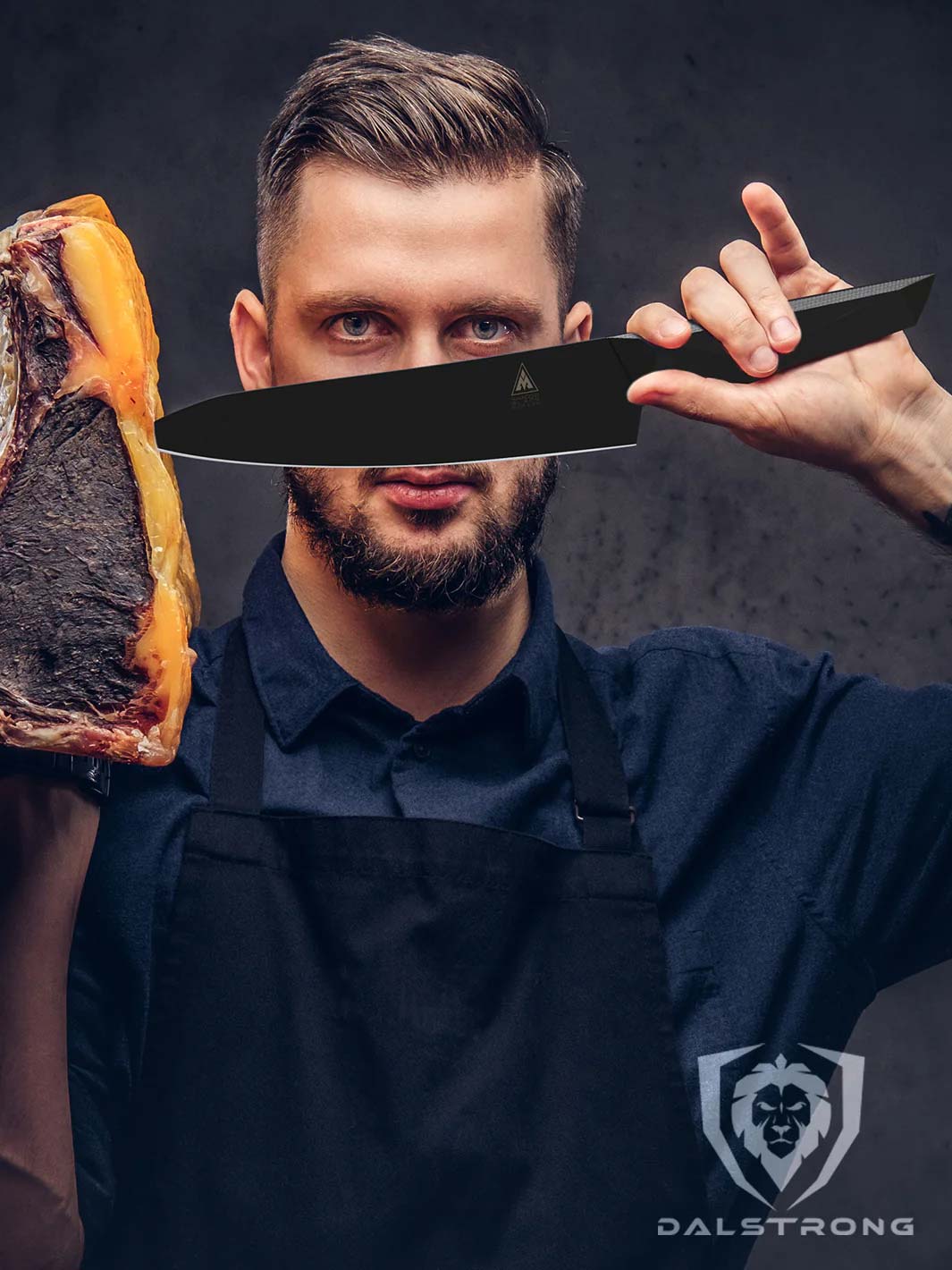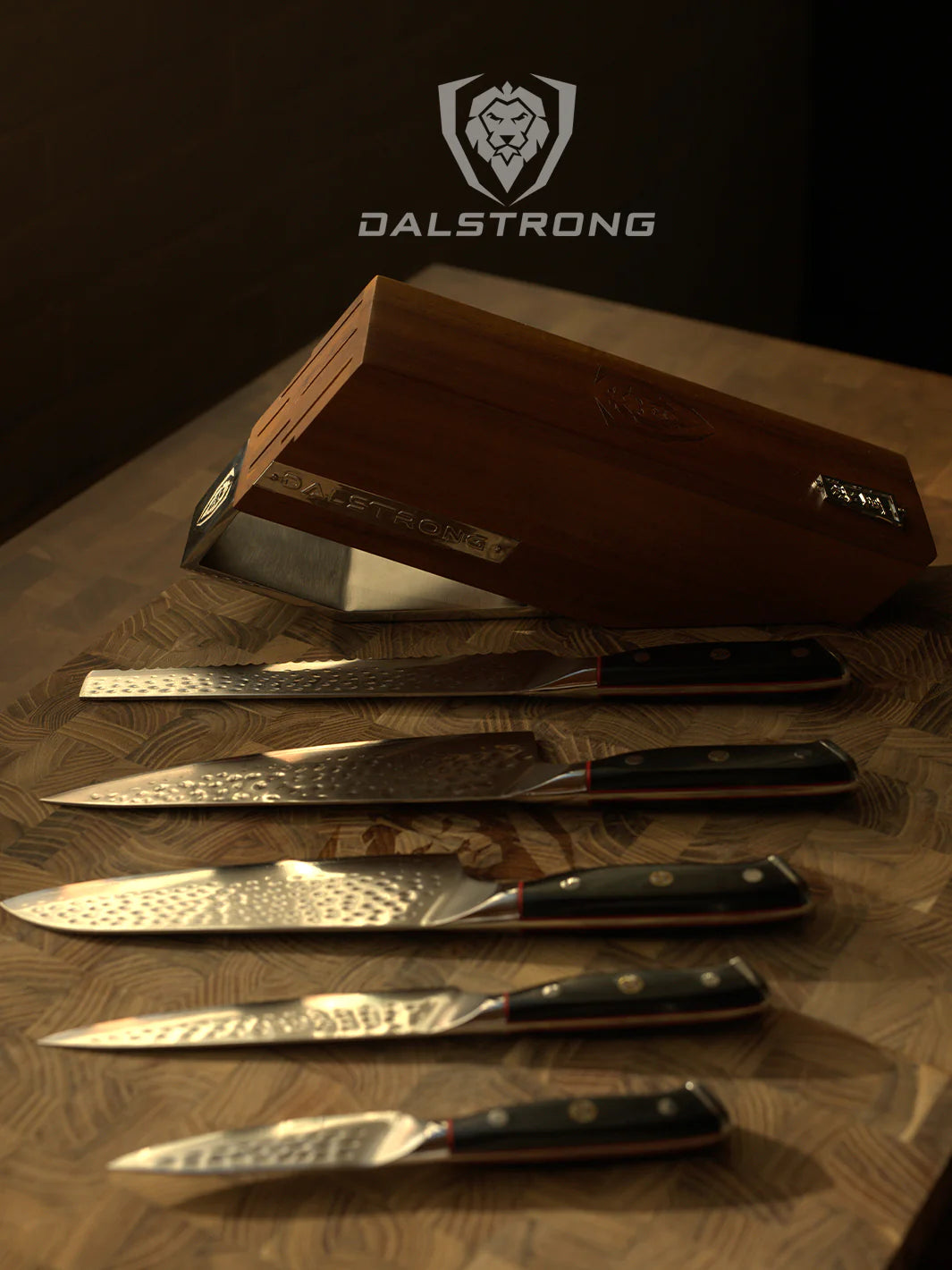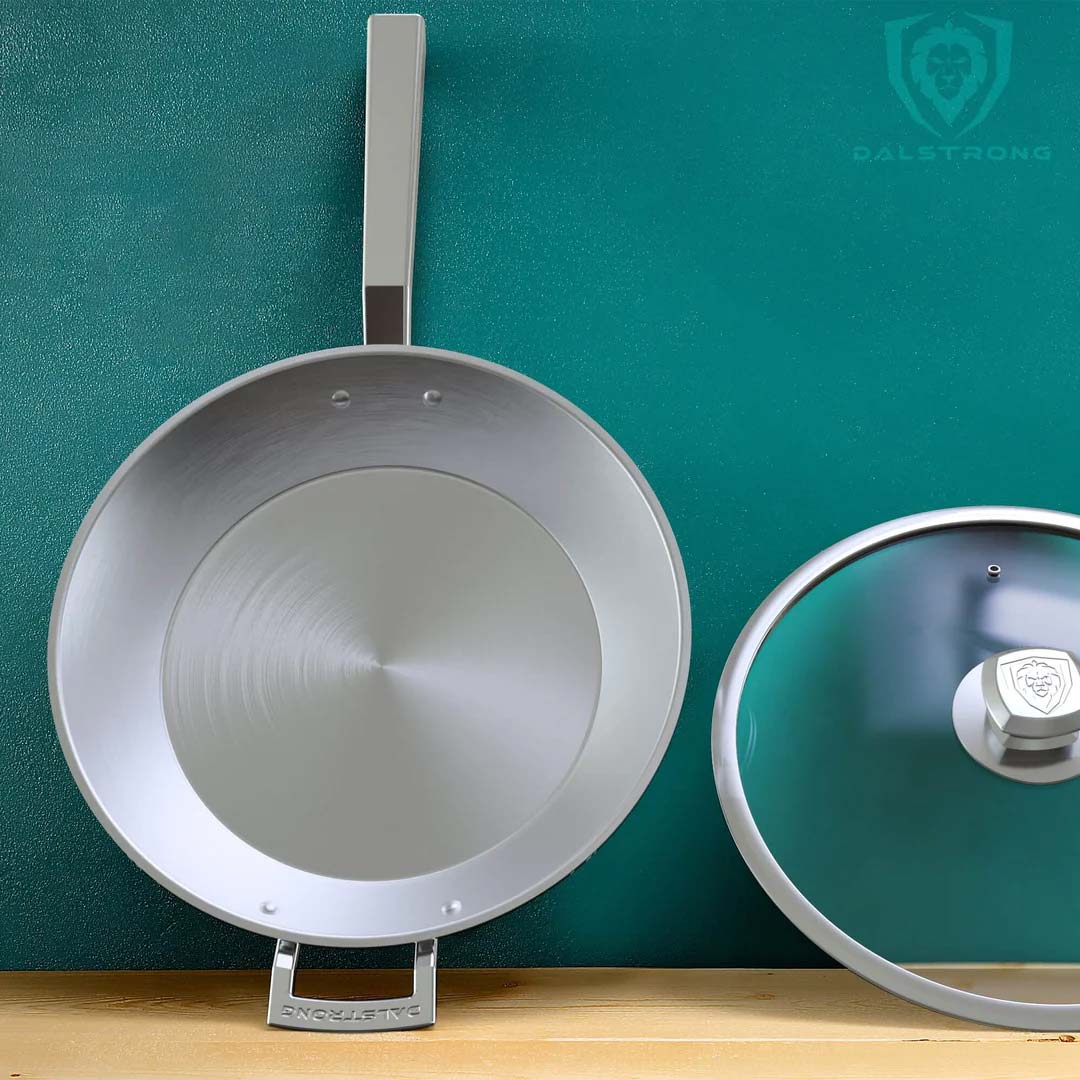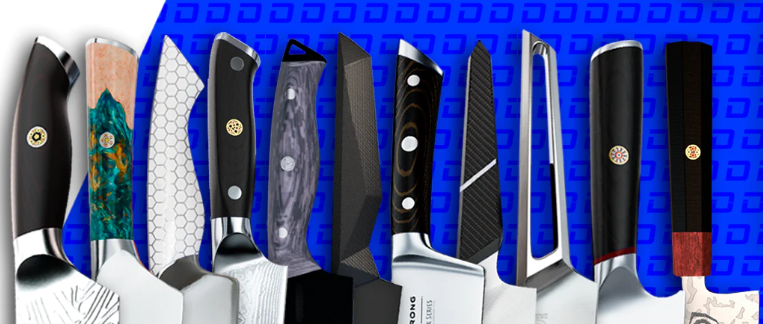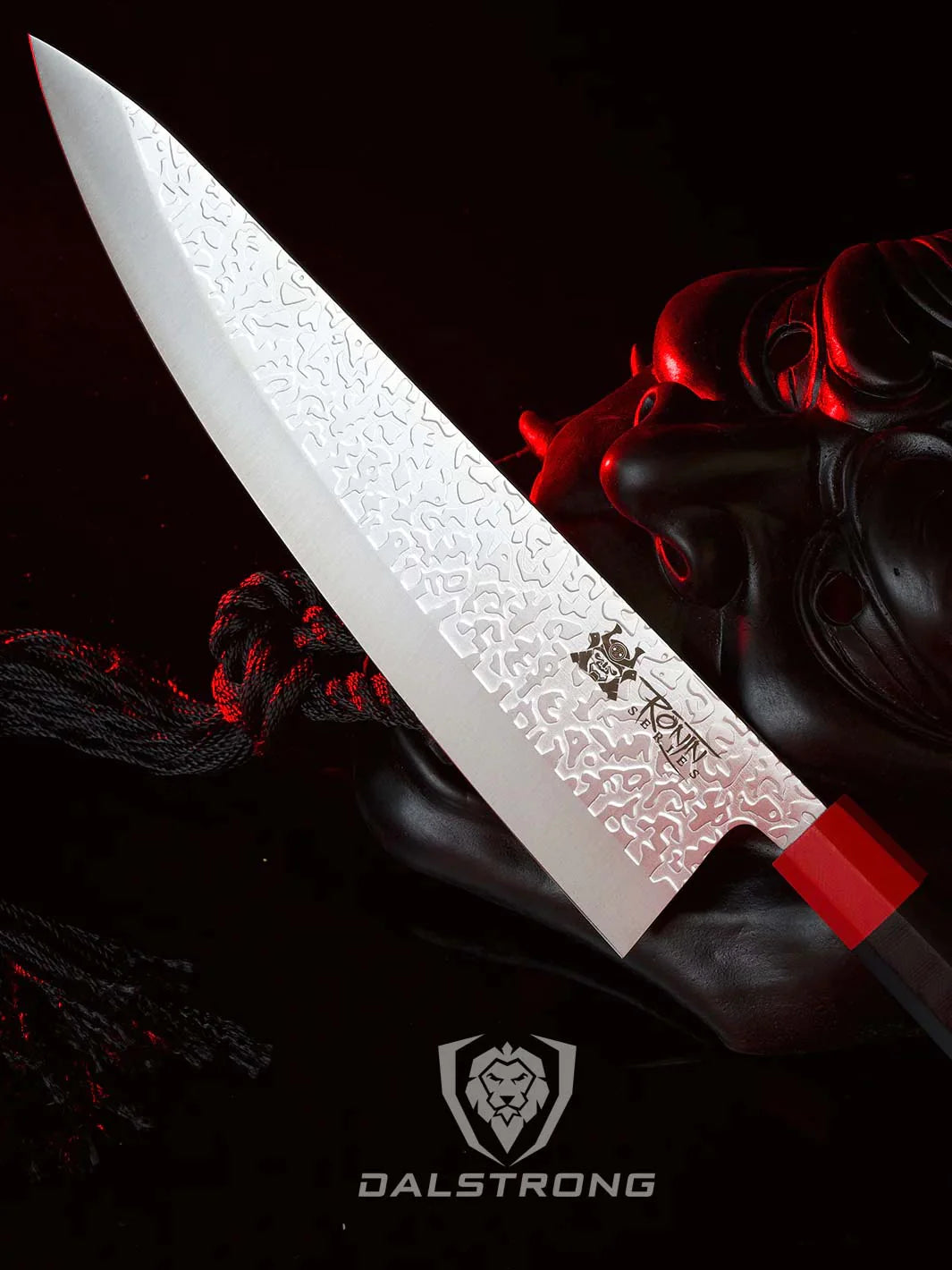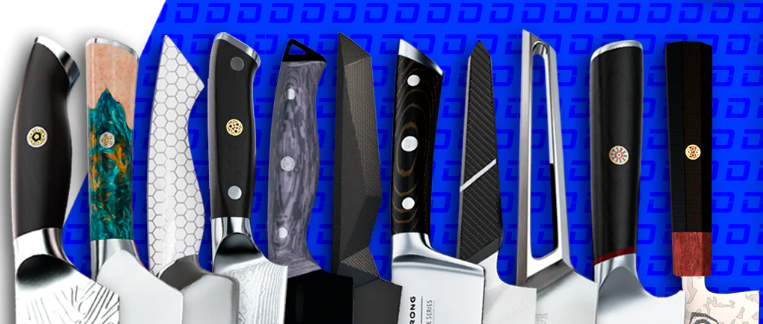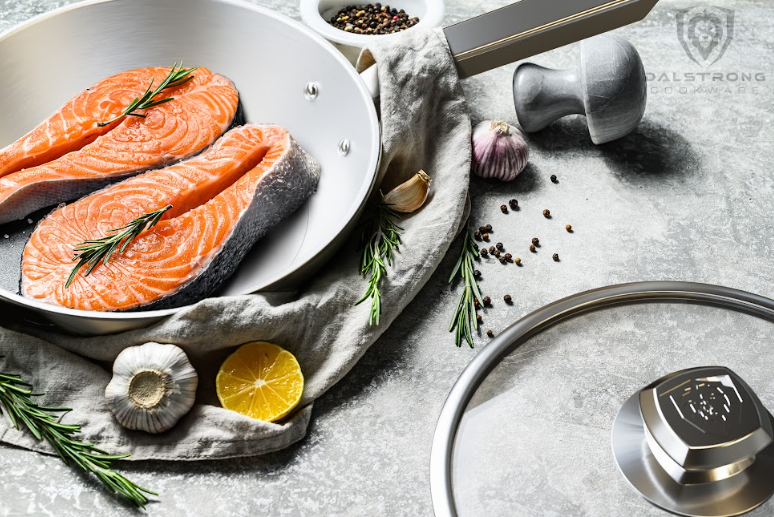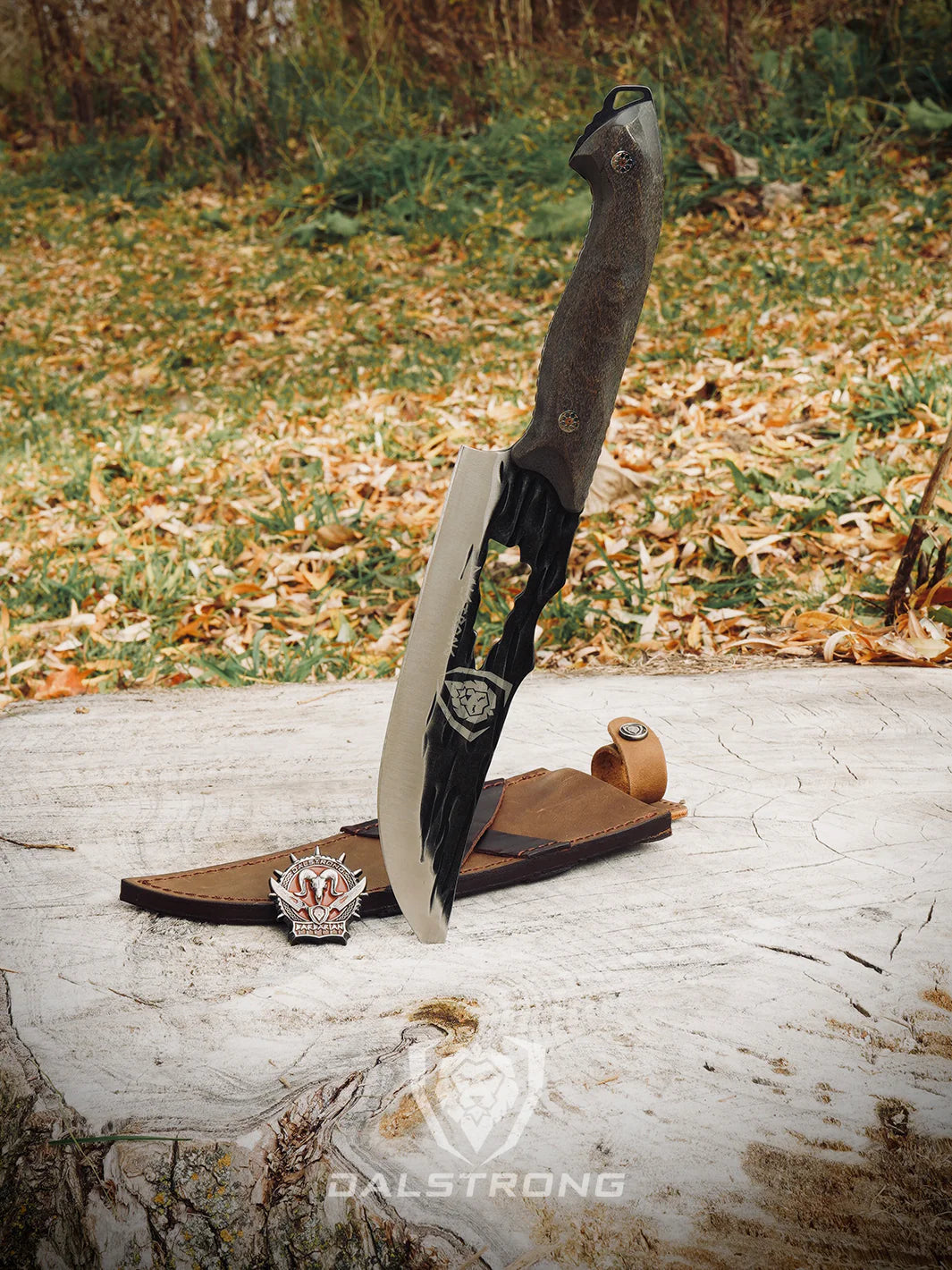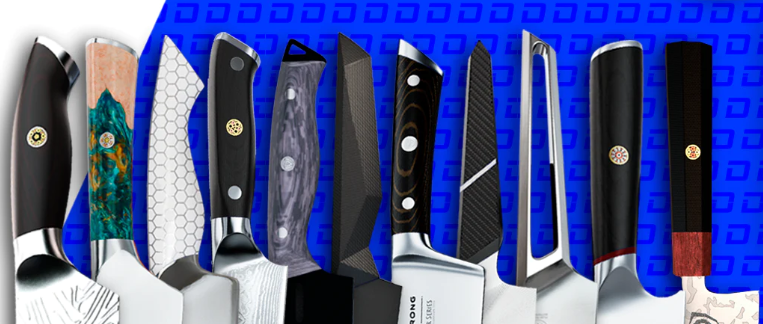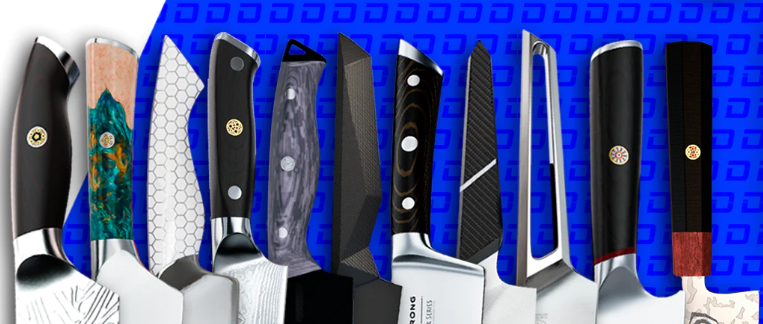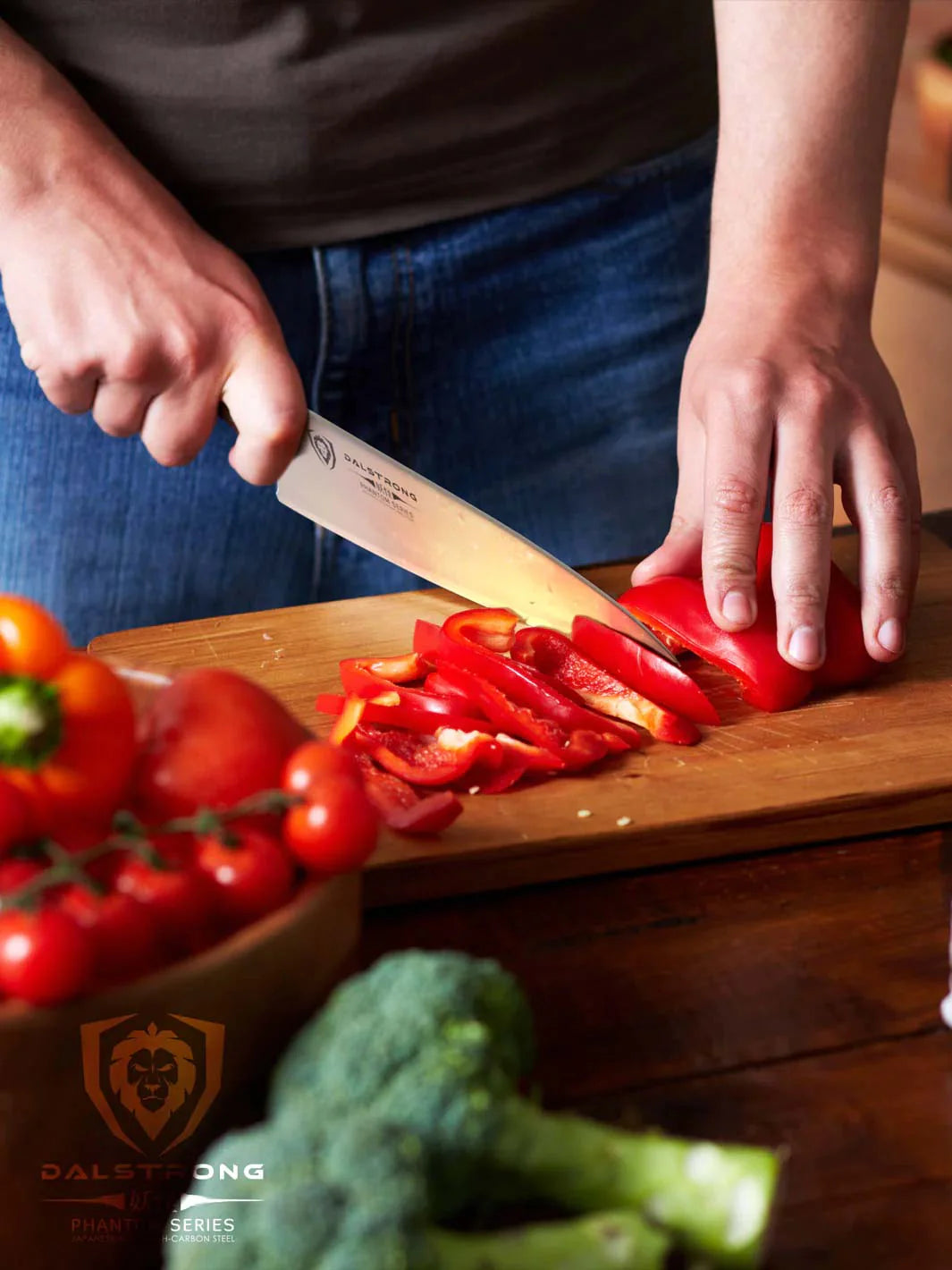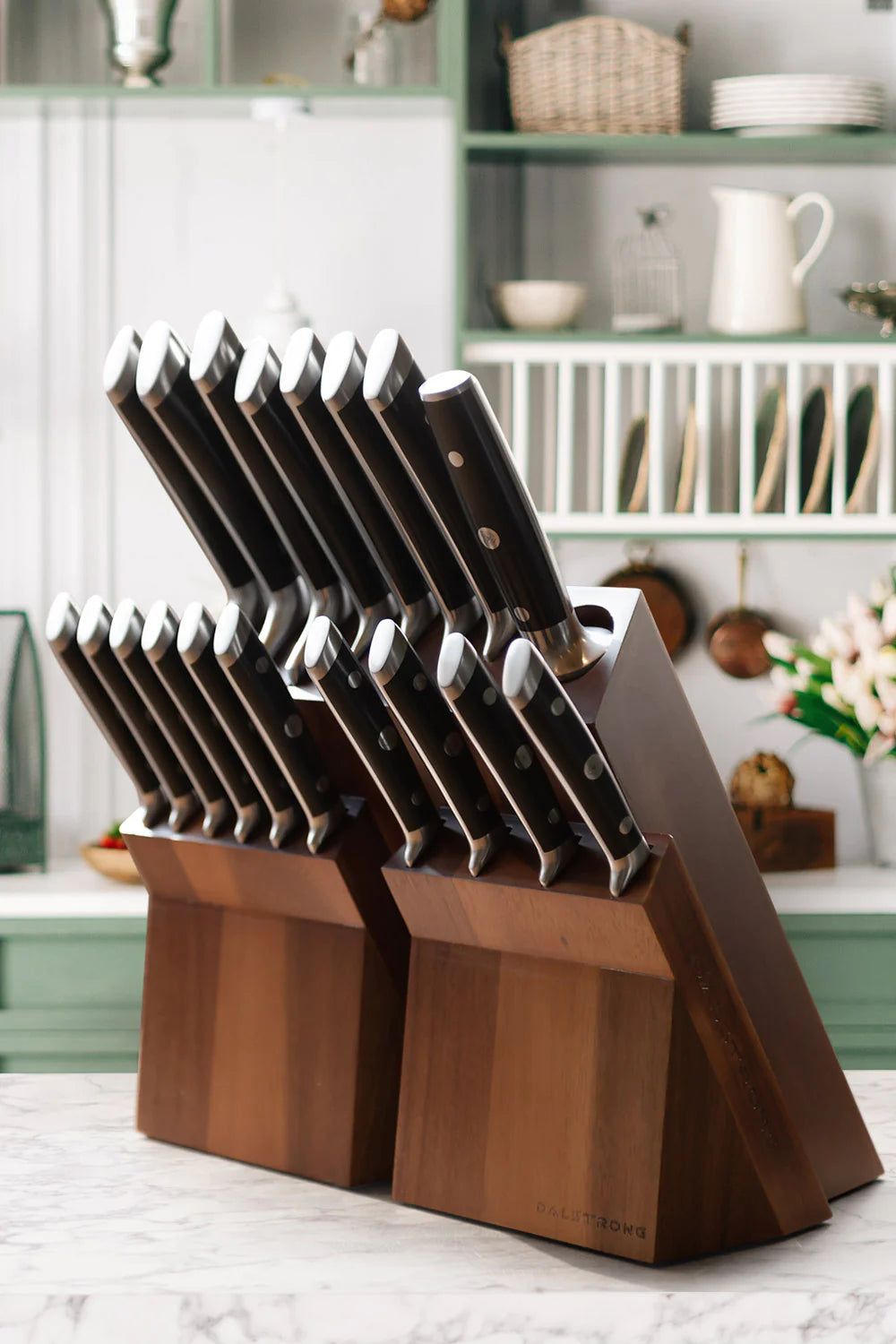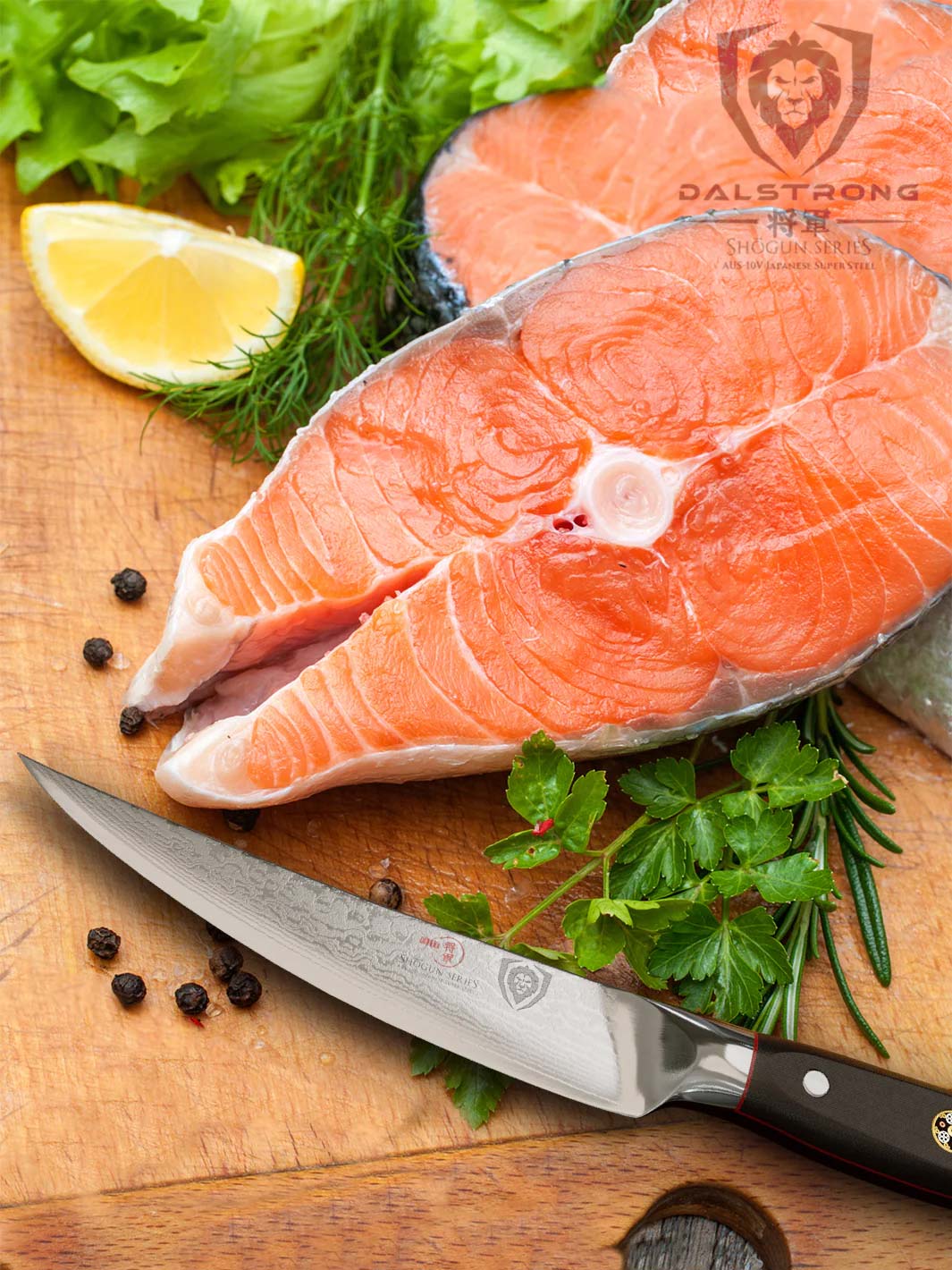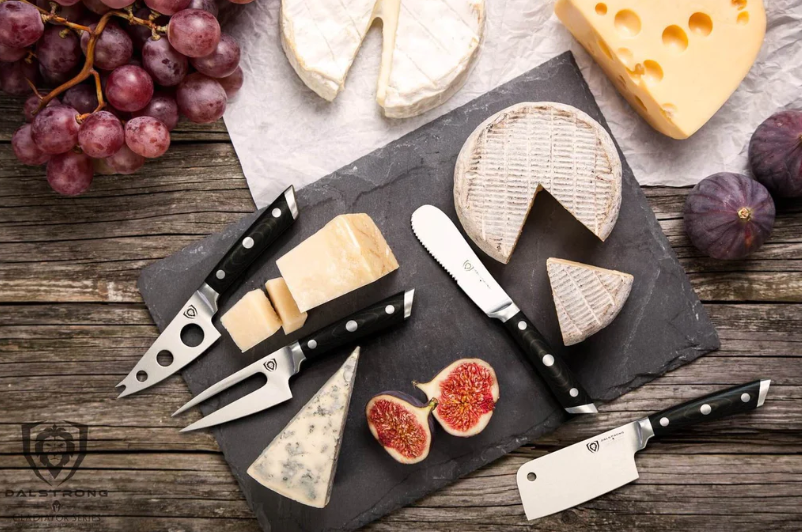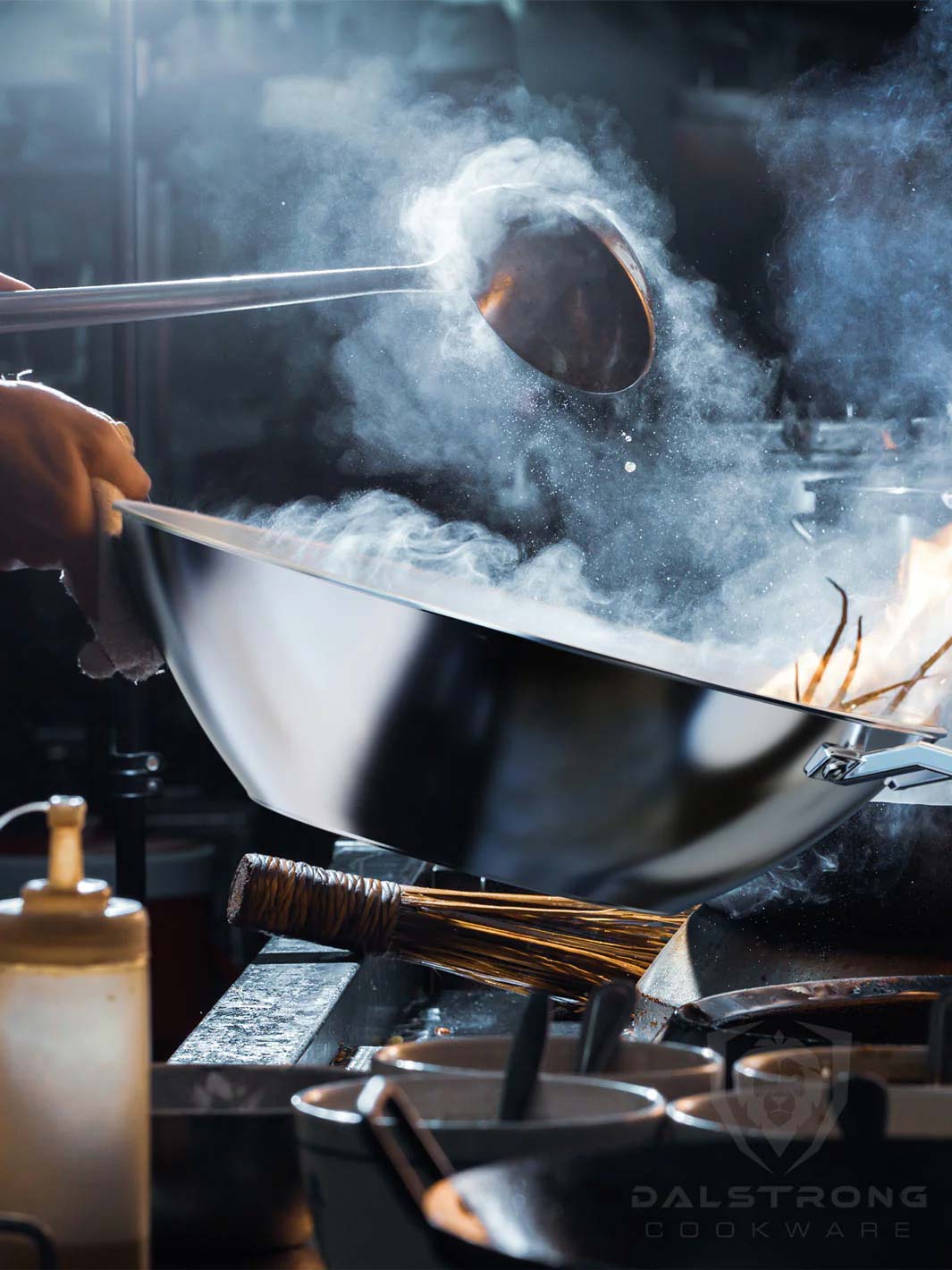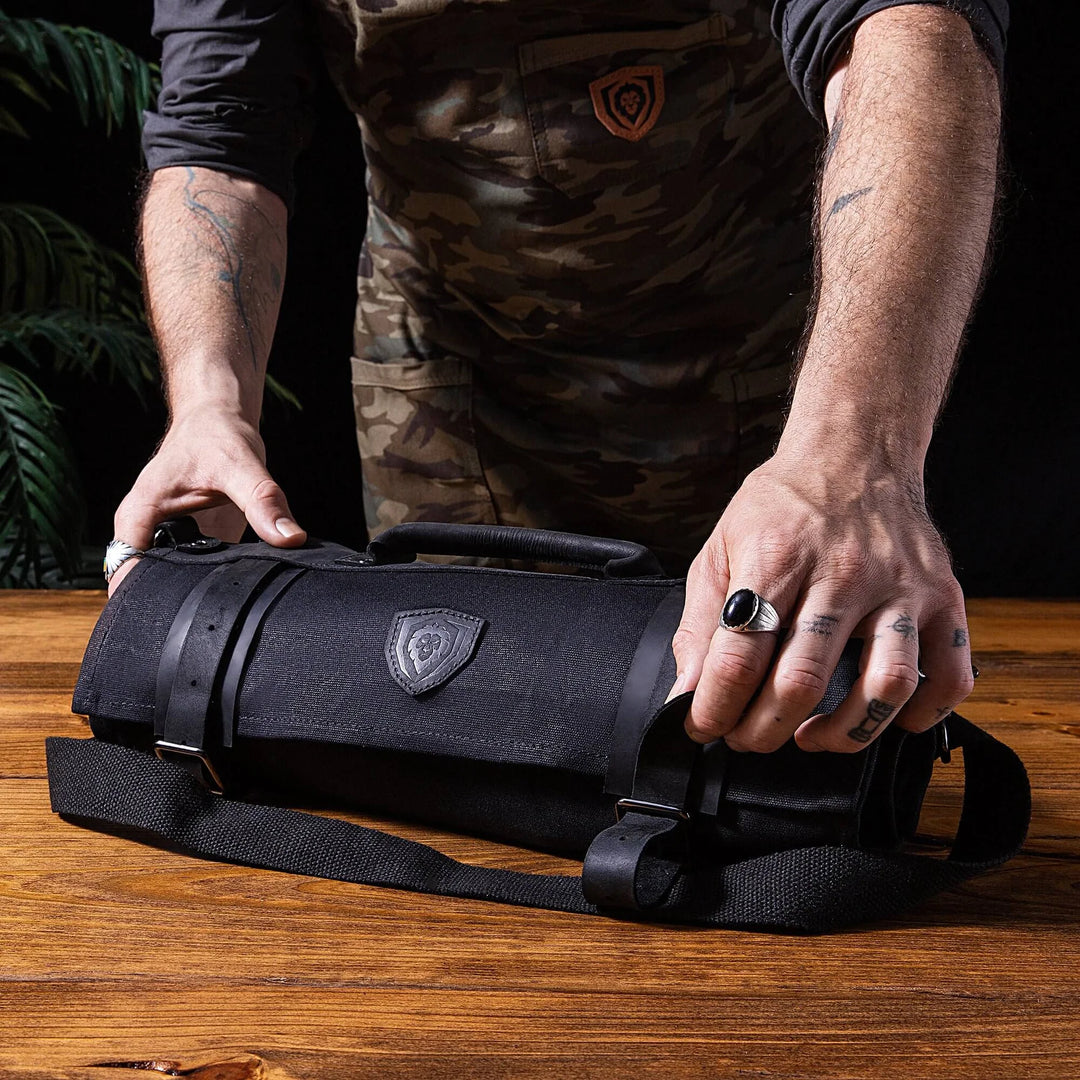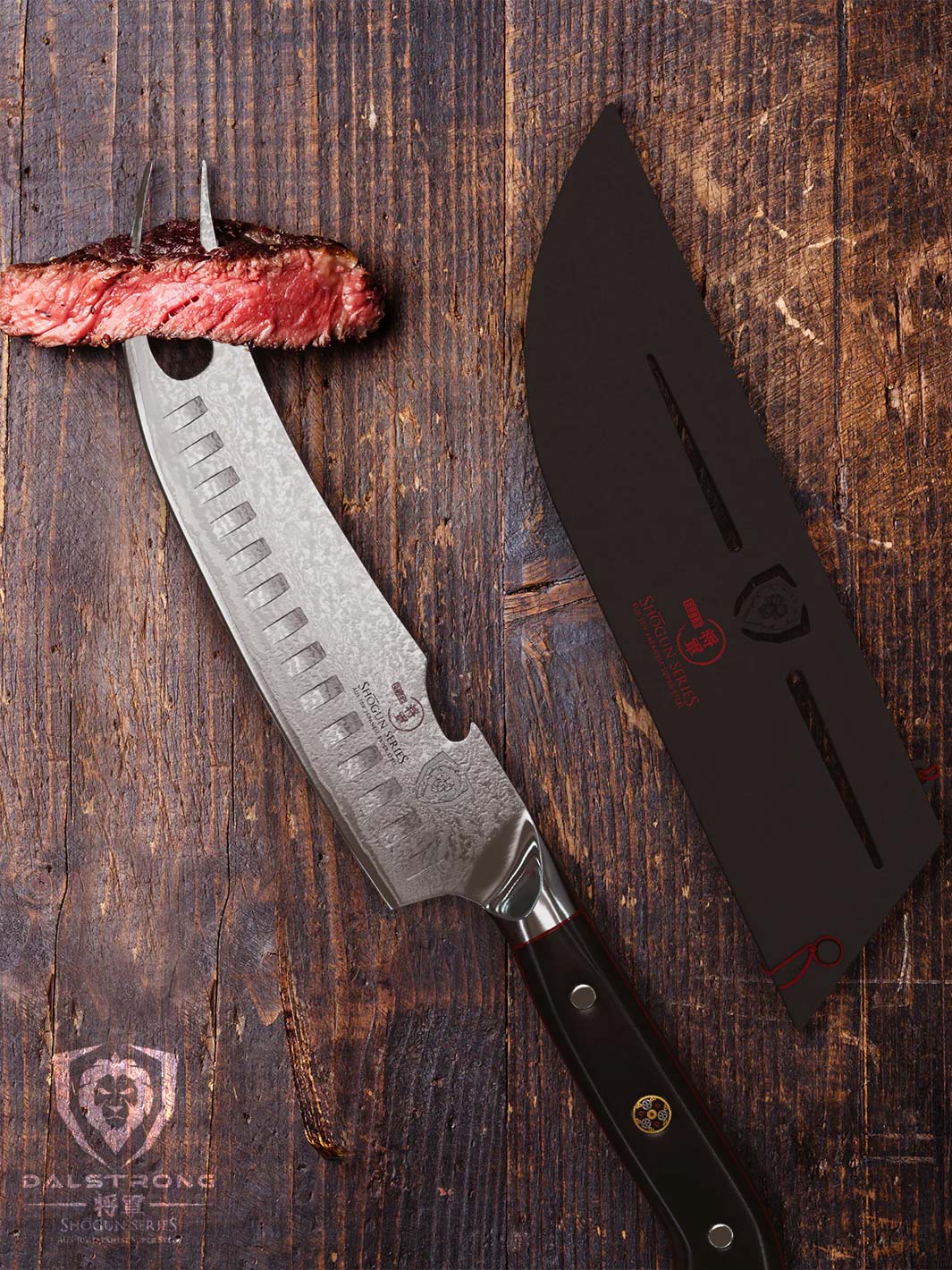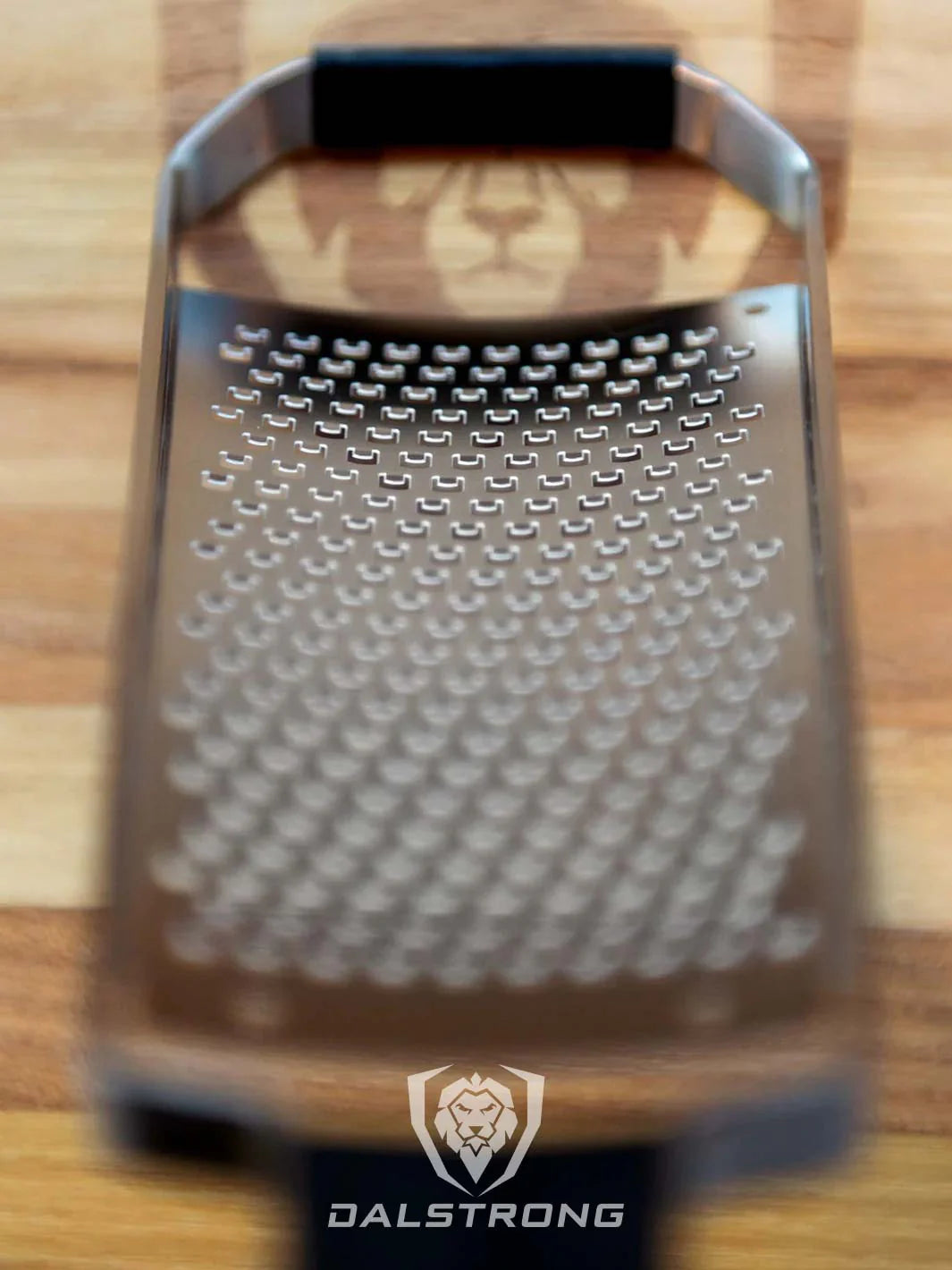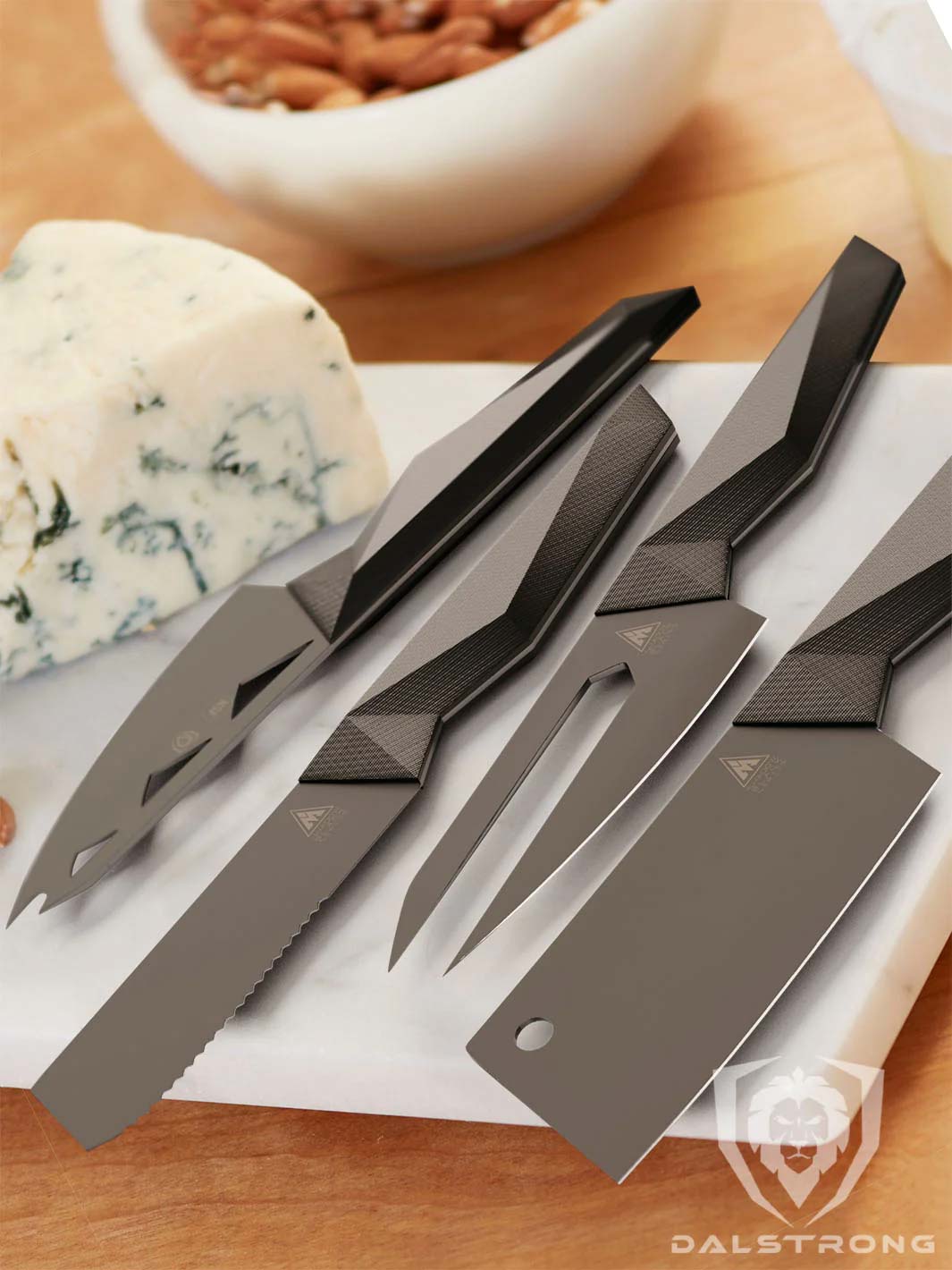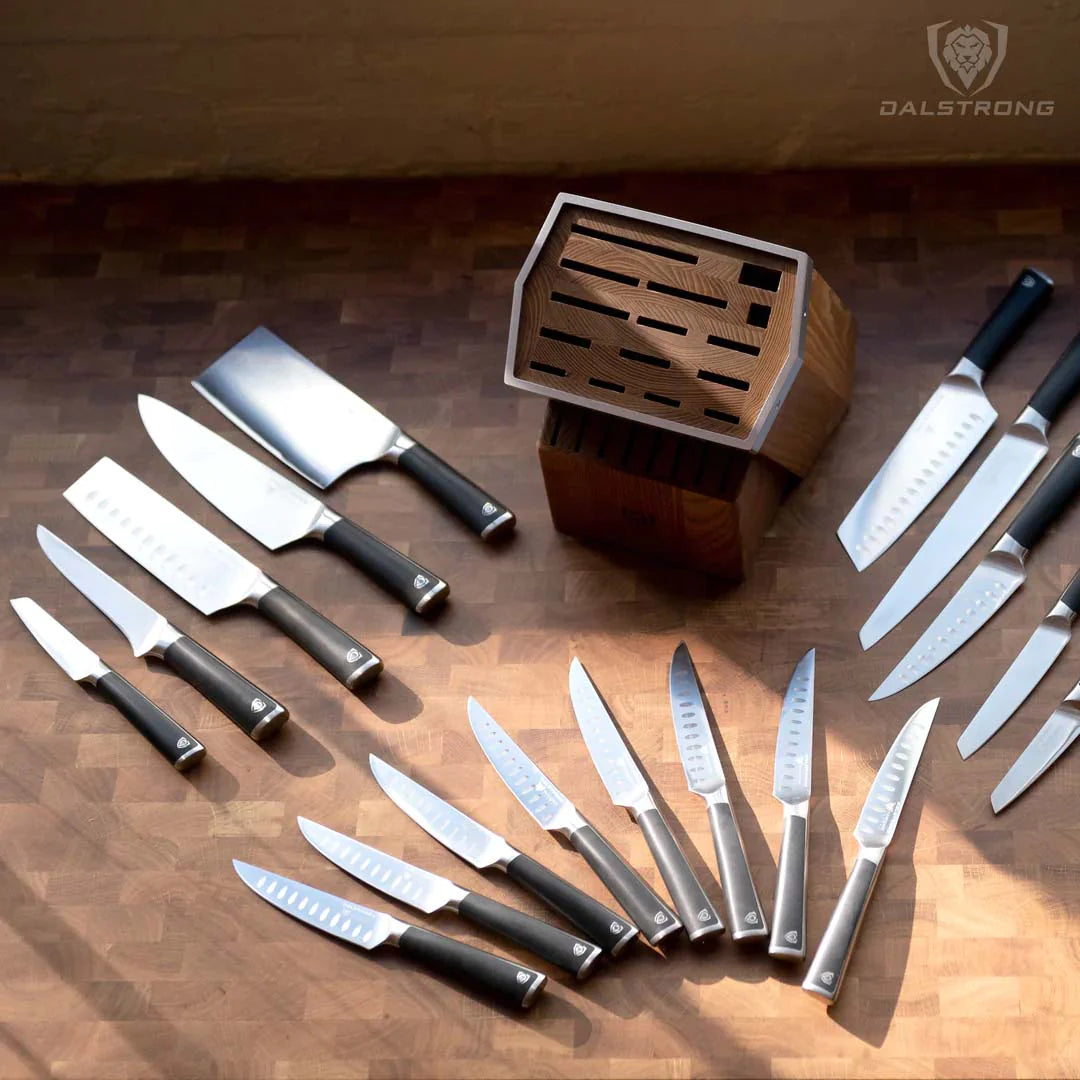How Your Knives Can Benefit From Honing Rods And Whetstones
There is a common misconception about dull blades not causing much damage, which is completely false. A lot of time, a dull blade or knife can cause serious injuries as it would keep slipping and sliding as the knife's edge has lost its balance and sharpness. It's important to keep knives sharp for safety and efficiency.
Honing rods and whetstones aren’t only designed for kitchen knives, but also for easy scissor sharpening, which is always a bonus if you use knife sets with a pair of kitchen shears. Let’s dive into everything you need to know about knife sharpening tools to keep them protected!
1. What Are Kitchen Knife Sharpeners?
 Honing Steel 10"Gladiator Series | NSF Certified | Dalstrong
Honing Steel 10"Gladiator Series | NSF Certified | Dalstrong
Simply put, kitchen knife sharpeners are to knives what nail filers are to your hands! Knife sharpeners can work on just about any dull knife – Chefs knives and pocket knives, too. And hey, contrary to popular belief, whetstones can also work on a serrated knife or knives made with carbon steel – They’re not limited to stainless steel knives.
Honing steel rods are just as important as whetstones, as they straighten the edge grip of your knife to prevent it from ‘cutting’ or ‘sliding’, this also helps you keep your knives sharp, regardless of the type of knife you have. This is because your knife won’t be taking on dents and damages from hard surfaces or countertops or cutting boards.
In a nutshell, honing rods can readjust the precision and edge of your kitchen knife and straighten them to achieve thin and uniform slices of meat, fruits, and veggies. Once your knifes edge is revived, you will have an improved angle control, too.
2. How Often Should You Sharpen Your Kitchen Knives?
 Dalstrong #3000/#8000 Grit Premium Whetstone Set
Dalstrong #3000/#8000 Grit Premium Whetstone Set
If you’ve got an active kitchen in your house or if you are a home cook with a catering business, sharpening knife blades every 2 weeks is a great practice. Regardless, you should store your knives in knife sets or knife blocks. Doing this will prevent your knives from losing their sharp blades or sharp edges.
If you notice that your knife has started to slide instead of gliding through food on the cutting board, it’s probably because you have a dull blade or a nonslip base. Your knives should always have a razor edge or a sharp blade. Pro sharpening company Knife Aid has a great article on knife safety and why sharper knives are actually safer than dull ones.
You also want your knife to slice and cut meats instead of puncturing them. The less pressure you apply, the easier it is to cut food up. If you want to test the sharpness of your kitchen knife, a quick sharpening test can help you.
Tomato Test
Steps:
- To test the knife, pick one with a dull blade.
- Angle your knife and glide through the halved tomato. (Ideally, you should try to glide the knife at any angle, as the edge should be sharp enough).
If your knife glides past the tomato, your whetstones or water stones have done their job.
3. Types Of Kitchen Knife Sharpeners
 Dalstrong Portable Whetstone Kit - #1000/#6000 Grit Combo - with Oak Storage Box
Dalstrong Portable Whetstone Kit - #1000/#6000 Grit Combo - with Oak Storage Box
Sharpening stones, also known as whetstones or water stones are a kitchen essential used by home cooks and professional chefs across the world.
While honing rods take slightly less time to straighten and adjust the lost sharp edges of a blade than whetstones, they are incredibly durable and robust, making the knife sharpening and scissor sharpening process feel like a walk in the park.
Electric Knife Sharpeners
Electric sharpeners take less time than whetstones to sharpen your knives but are quite damaging in the long run as the abrasive motor fit into them is quite rough for the dull blades of a carbon steel or stainless steel knife to take on. They’re also not compatible with ceramic knives. In a nutshell, these sharpeners can significantly reduce the longevity of your knife.
Honing Steel Or Honing Rods
Honing steel rods are an excellent tool in your kitchen for maintaining and readjusting the precision of your knife. While it is crucial to keep your knives sharp, it’s also important to make sure that the spine and sharp edges of your knives are in place, too.
You can also use ceramic rods as an alternative to keep your knives honed and polished for use. Just keep in mind that they don’t sharpen knives, but only straighten and realign them!
4. Battle Of The Best – Whetstones vs. Electric Knife Sharpeners
 Dalstrong #3000/#8000 Grit Premium Whetstone Set
Dalstrong #3000/#8000 Grit Premium Whetstone Set
Size
In terms of size, whetstones or water stones are simply perfect! This is because they’re compact and portable, and can be stored in kitchen drawers easily and without taking up too much space.
Electric knife sharpeners are fairly large and can damage the blade of your knives over time as they have an abrasive motor. They’re also too large for ceramic knives.
Time
Sharpening stones take anywhere from 5-10 minutes to sharpen dull blades. While it takes a longer time to sharpen knives than electric knife sharpeners, they are much more gentle and durable.
They are also equipped with a smoother surface to support the sharp blades of your knives.
Electric ones on the other hand are designed with an abrasive motor which is extremely damaging to knife blades. This is also why chefs and home cooks choose sharpening stones out of manual and electric sharpeners.
While electric sharpeners like the Trizor XV are quicker than honing rods and whetstones, over time, they do tend to be damaging to the blade.
Grit
Knife sharpening stones have a versatile range of grit to offer. They range from 100-to 6000. This means that whetstones can repair dull blades, fix chipped edges, refine the spine of knives, and revive the sharp, razor edges.
A bonus is that sharpening stones have a coarse grit to help fix the edge of a serrated knife, too. They also make the entire kitchen scissor sharpening process easy.
Electric sharpeners offer grit that ranges from 300 to 600. This allows them to only repair chipped edges. There is very little that they can do for dull edges or blades.
Price
Reputable sharpening stones run anywhere between $50-$170.
Reputable electric sharpeners run anywhere from $36 to $1100.
5. What To Look For In Whetstones And Honing Rods
 Dalstrong #400/#1000 Grit Premium Whetstone Set
Dalstrong #400/#1000 Grit Premium Whetstone Set
Grit
Grit is the number indicated beside the whetstone, which refers to how coarse the abrasive particles in it are.
For example, if a serrated knife has a damaged blade, a grit with a lower number is ideal to revive the sharp edge. Whetstones have the most incredible grit. They range from 100 to 6000.
Sharpener stones can not only repair dull blades, but also fix and sharpen blades, and revive their razor edge. If you’re big on serrated knives like I am, don’t fret! There is an added benefit for serrated knives, too.
Since serrated knives are harder to sharpen, a whetstone with the right grit can bring back its straight edge, it only takes a couple of extra minutes.
Size
Whetstones are portable, compact, and easy to hold. They can also be stored in the kitchen drawers or kitchen arsenal.
Time
Electric knife sharpeners take more than 12-15 minutes to sharpen, whereas water stones or sharpening stones can get the job done anywhere between 5-10 minutes.
Manual knife sharpeners can revive dull knives with only 5-10 minutes of sharpening time.
Price
Reputable whetstones run anywhere between $50-$170 which is a very reasonable price to pay for a sharp knife, or sharp culinary in general.
Honing Rods
Size
Sharpening rods or honing rods are usually 9” to 12” inches long and work well on serrated knives and knives made with carbon steel, too.
Time
Honing rods take 10-12 minutes to hone a dull blade or a dull knife. If you’re working with serrated knives, these rods help sharpen the serrations without causing damage to the blade.
Price
Since most rods are made with premium quality stainless steel, they’re slightly more expensive. But, at Dalstrong, we understand that premium is the standard, so our honing rods are well-priced, ranging between $50 - $70.
6. How To Use Whetstones And Honing Rods
How To Use A Whetstone
Before getting started on the sharpening process, remember to soak the sharpening stone in cold water for 10 minutes.
- Once soaked in water, rest the whetstone for an additional 5-10 minutes.
- Then, angle your knife at 20º degrees against the stone, with the flat side facing upwards.
- Begin sweeping your knife from the blade, starting with the base first.
- Go back and forth without dragging the edge of the blade.
- When you think the base of your knife is sharp enough, move towards the tip.
- Angle the tip of your knife and very gently sweep it on the whetstone. (This should sound like grinding sandpaper).
- Then, flip your knife over and reposition it once again at 20º degrees.
- With intervals, continue to alternate for 5-10 minutes, depending on how dull the blade is.
- Once the blade and spine of your knife feel smooth, you are good to go!
How To Use A Honing Rod
- Angle your knife on the rod. To achieve the best angle control and edge grip on your dull knife, point the knife at 15-20 degrees.
- With a steady hand, gently apply pressure on the knife and oscillate back and forth.
- Continue this process with intervals every 5 minutes and alternate sides.
- Before placing the knives back in the knife set, remember to smoothen the surface of the blade on a whetstone!
7. Dalstrong Honing Rods And Whetstones You Need
1. Honing Steel 9” Shadow Black Series | NSF Certified
This 9” inch rod is perfect for knives that need a little readjustment or need to be realigned for an enhanced edge grip. Coming up from our infamous Shadow Black series, this rod is precision-forged, wear-resistant, and made with high-carbon stainless steel. This honing steel was designed for those who are aficionados of sharp knives and sharp culinary in general!
Pros:
- Equipped with an additional layer of chromium plating for resistance to corrosion and stain.
- The tiny grooves along the rod’s surface help you realign the blade on serrated knives with ease.
Cons:
- Honing rods do not sharpen knives, they only provide a better angle to an already sharpened knife.
- You could be looking for a honing rod that better fits your budget. So, I suggest this 10” inch honing steel from the Gladiator series.
- You may prefer a handle made entirely with stainless steel.
2. Honing Steel 10" Gladiator Series
Made with ultra sharp and wear-resistant high carbon steel, this rod is all you need for all your knives. This honing steel is hardened at 55+ Rockwell. Tempered for added durability, the military-grade G10 handle is engineered for easy maintenance and cleaning. Handcrafted with contoured Pakkawood from Spain, the handle is built for withstanding large knives and tuna swords or carving knives.
Pros:
- Triple riveted handle for extra durability.
- Engraved Dalstrong center that is sure to impress those with a love for aesthetically pleasing sharp culinary.
- Ergonomic handle for comfortable edge grip and flexibility.
Cons:
- If you’re looking for a handle made entirely with stainless steel, this may not work for you.
- If you prefer a smaller rod to hone dull blades, I suggest this 9-inch rod, instead.
3. Honing Rod 10" Ceramic Coating
This 10-inch rod is perfect for kitchen knives that are 5 to 9 inches long. This scratch-free rod is made with high-carbon stainless steel and is ideal for Japanese knives. All you need to do is gently hold your knife and slide the edge back and forth until the desired sharpness. The hand-polished and ergonomic handle shape are all you need for all your kitchen knives.
Pros:
- Equipped with a silicone-covered tip for stability and sturdiness.
- Low in maintenance and easy to clean.
- Slightly abrasive to work with long knives and scissors.
Cons:
- You may not work with a lot of kitchen knives or own a kitchen set, so this rod might not be the right purchase for you. Although, it is designed to withstand the smallest of knives, too!
- If you’re on the lookout for a smaller rod for dull blades, you may benefit from this 9-inch rod instead.
4. #400 / #1000 Grit Premium Whetstone Set
This premium knife sharpening set is made with top-grade corundum for robustness, sturdiness, and resilience. It has a show-stopping grit of 400 and 1000 to bring back sharp edges on your knife’s dull blade.
Pros:
- Made with premium quality Acacia wood for durability.
- Equipped with a 400 grit sharpening stone that is coarse for your broader kitchen knives.
- Easy to clean and low in maintenance, which will save you plenty of time.
Cons:
- I suggest a whetstone with 6000 grit if you’re specifically looking to refine the edges of serrated knives or paring knives.
- You may be looking for a whetstone kit with a rust eraser. Rest assured, we’ve got you covered with this whetstone kit.
5. #3000 / #8000 Grit Premium Whetstone Set
This premium knife sharpening stone kit is packed with function and convenience, especially if you’re a home cook or professional chef with a very busy kitchen! This whetstone is designed with high-quality corundum and has two large water stones or whetstones which help in sharpening your knives with ease. It’s time to bid farewell to dull blades, folks.
Pros:
- This stone kit helps the knife’s precision adjust to its best angle apart from sharpening the dull blades.
- It is designed to fix damaged blades and bring back their sharp edge.
Cons:
- If you’re looking to fix chipped edges, I suggest a whetstone kit with a 400/1000 grit.
- You may be looking for a rust eraser, which can be found in this whetstone kit.
6. #1000 / #6000 Grit with Nagura Stone & Rust Eraser Premium Whetstone Kit
Now, folks. This is a personal favorite! This stone kit is made with high-quality corundum and comes packed with two individual whetstones or water stones that have 1000 and 6000 grit – Perfect for scissor sharpening, repairing damaged blades and making blades razor sharp. This kit is all you need to revive your sharp culinary.
Pros:
- The base is made with premium quality Acacia wood for an uncomplicated scissor sharpening process.
- The Nagura stone acts as a conditioner to smoothen the blades after completing the sharpening process.
- Offers excellent angle control on your knife when you cut or slice.
Cons:
- If you’re looking for a whetstone kit that has a grit less than #1000, I suggest this 400/1000 stone kit.
- This is a robust, complete, and elegant set that could be out of budget for some people.
7. #1000 / #6000 Grit Combo with Oak Storage Box Portable Whetstone Kit
There is nothing better than a sharp edge on high-end Japanese knives or all other premium-grade knives. It would only make sense to pair your knife set with the right sharpening rods to keep the blades razor-sharp. This whetstone kit is perfect for you to champion your inner Dalstrong Pro (which we love to see!)
Pros:
- Made with the premium quality of corundum.
- Equipped with a functional and portable storage box for when you’re on the go.
- Dalstrong’s ‘After Service Care’ to help you if any inconvenience arises – We’ve got you.
Cons:
- If you’re looking for a more coarse whetstone grit, I suggest this 3000 and 8000 stone kit.
- If you’re looking for an oiled whetstone, this may not be the one for you. But, I still suggest that you try it. This kit isn’t built to fail at all.
8. Frequently Asked Questions
What is the best way to sharpen kitchen knives?
The best way to sharpen kitchen knives is with whetstones, also known as water stones or sharpening stones. Simply pick a stone kit that supports your knife’s blade type and angle it where there is damage. Go back and forth with intervals and alternate sides as per your preference. And, you’re done!
What do chefs use to sharpen their knives?
Chefs use whetstones or water stones to sharpen their knives. Professional chefs in busy kitchens also need honing rods to readjust or realign the knife. This is because chefs knives often come in contact with rough surfaces.
Do knife sharpeners ruin knives?
Not at all! What might seem like an insignificant part of maintaining knives is actually the reason you don’t injure yourself in the kitchen. There is nothing riskier than a dull knife or a knife with damaged and dull blades. The blunt spine and edge of a knife will make it ‘bite’ food, and may even slip and slide from your hands.
Do pull through knife sharpeners work?
Pull through knife sharpeners often have an abrasive motor, just like electric sharpeners do. These sharpeners aren’t ideal for delicate knives like ceramic knives or serrated knives. They also won’t help in the scissor sharpening process. Chefs across the world choose whetstones for their safe nature and versatility.
Shop Whetstones








































































































































































































